The Völklingen Ironworks is the world’s only surviving smelting works from the 19th and 20th centuries, and offers a unique opportunity to not only admire its engineering, construction, and operation, but to learn about the many layers of its history during the industrial revolution, both World Wars, and the post-war era.
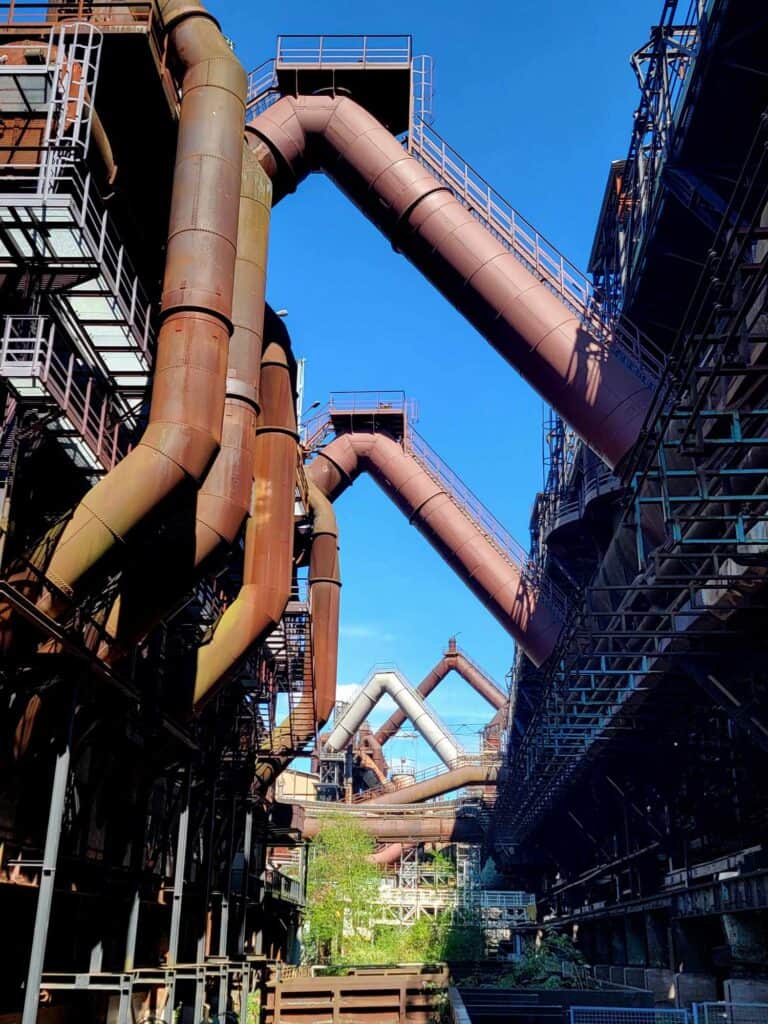
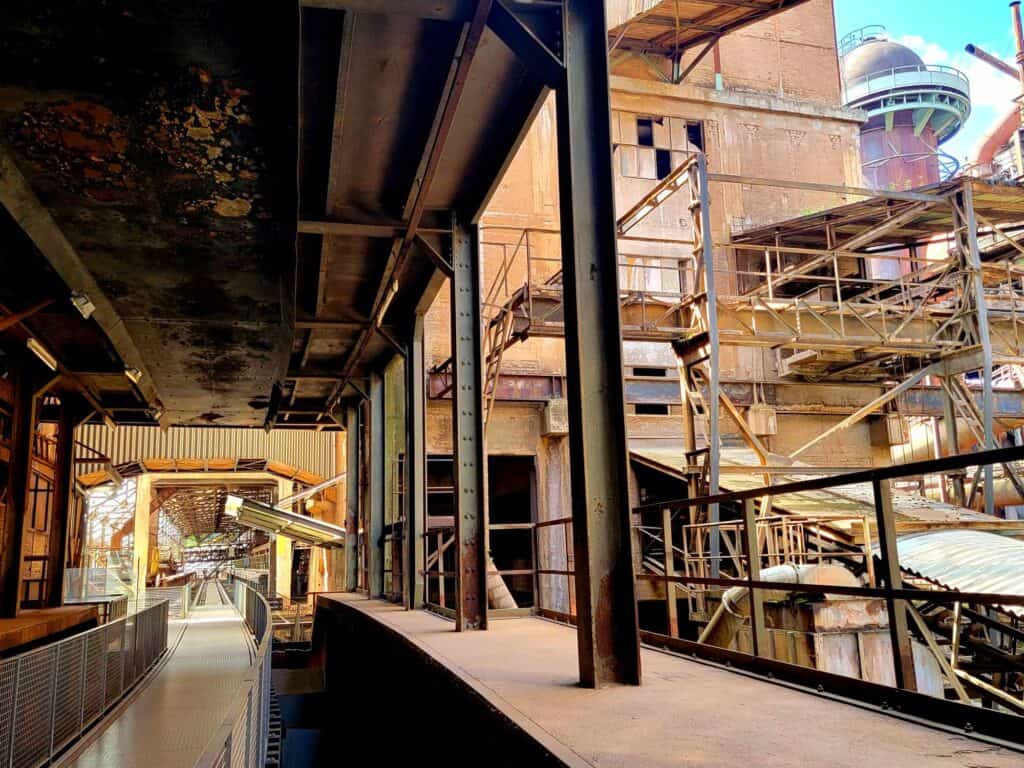
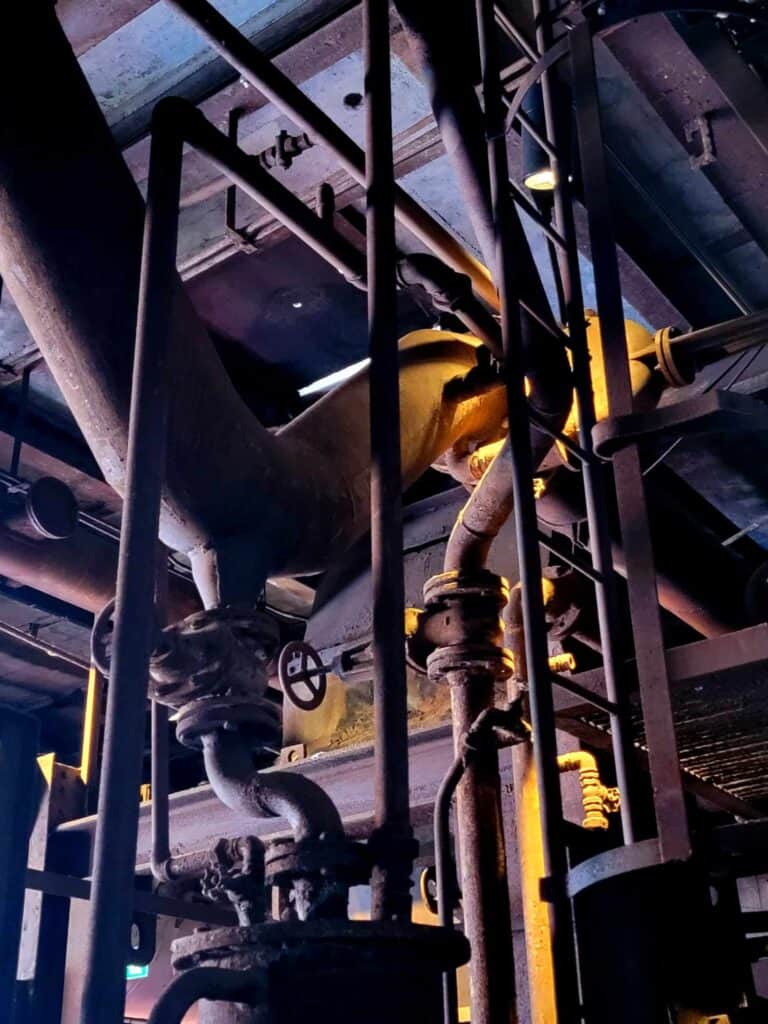
In 1994 it became the first industrial monument to become a UNESCO World Heritage site. Völklingen Ironworks is absolutely jaw-dropping, and will stir all kinds of emotions, from awe and admiration to sadness and horror. The sheer size and capability of this powerhouse of the Industrial Age is overwhelming, and yet, the natural world is slowly encroaching and reclaiming its borders, the artworks featured within its walls are filled with color and controversy, and the horrible uncomfortable truth of its pre-war and World War II era history whispers from the walls. There’s a lot to unpack, and it will be a visit you won’t forget.
It Begins With Saarland
In Germany’s southwest region, bordering France and Luxembourg, the state of Saarland is a region rich in industrial history. Coal and iron ore in abundance fueled the region’s industrial empire in the nineteenth century as these resources were developed. It’s strategic location at the crossroads of major European trade routes and proximity to the Saar River facilitated the transportation of both raw materials, and finished goods. This combination helped to create the rise of iron and steel production.
On July 31, 1870, the French Emperor Napoleon III ordered an invasion across the Saar River, to take possession of Saarbrücken, today the capital of the state of Saarland, and just a few miles from where Völklingen ironworks stands today. In 1871, during the course of the war, Saarland became part of the German Empire.
The Birth of an Industrial Colossus
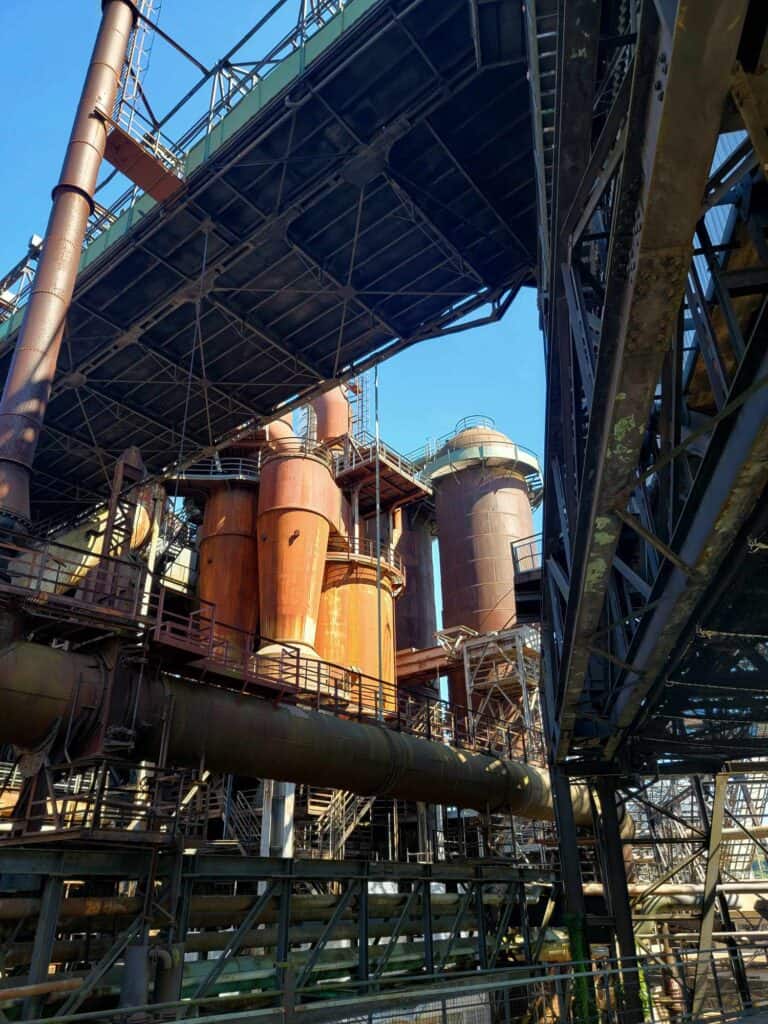
Just two years after those first shots were fired, in 1873 the Völklingen ironworks was constructed, and six years later was acquired by Karl Röchling whose family would be intertwined with the ironworks for nearly a hundred years.
Sponsored content: this section contains affiliate links
With the expansion and addition of blast furnaces, smelters, a coking plant, and gas-blowing engines, Völklingen Ironworks rapidly became one of Europe’s leading iron and steel producers. An absolute marvel of 19th-century engineering, even today, the towering blast furnaces, sprawling production halls, and vast network of conveyors and railways is really astounding. When you stand in the middle of it, dwarfed by the sheer size, surrounded by mammoth towers and steel beams, it really is breathtaking and at times looks almost like a work of art in itself.
Innovation, Expansion, and Progress
The iron produced at Völklingen in the 19th and 20th centuries made possible everything from shipbuilding to steel beams, to railway construction. The ironworks generated not only the building blocks of infrastructure, but vast amounts of wealth for the Röchling family. The ironworks also employed thousands of Saarlanders over generations, and many decades.
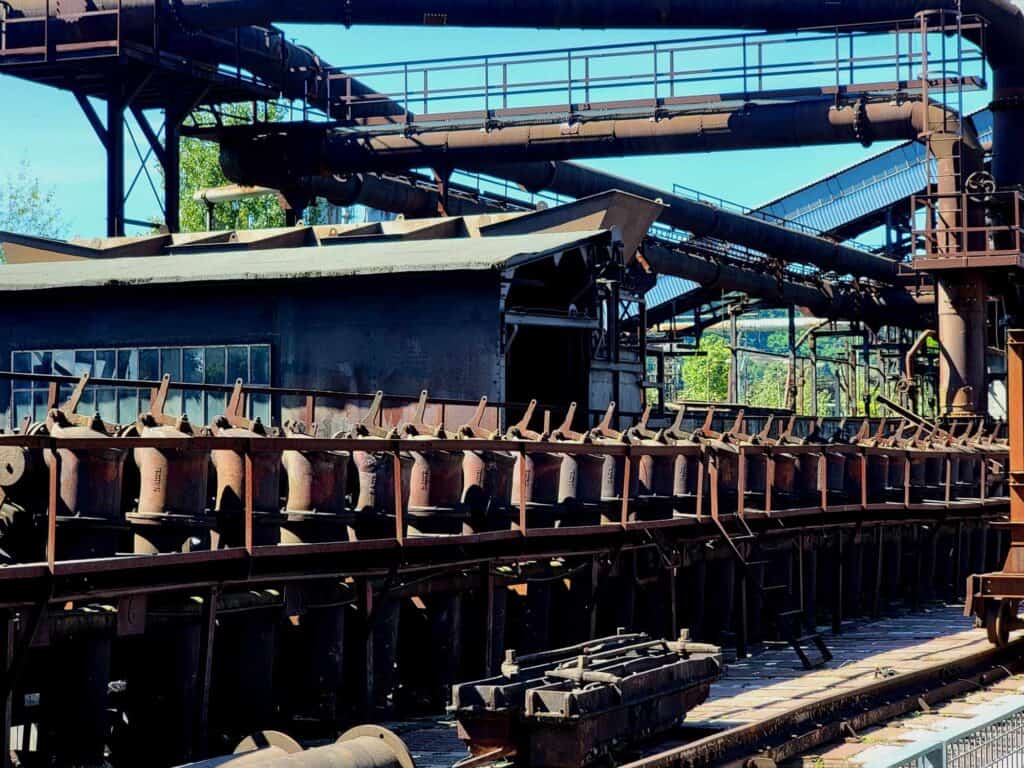
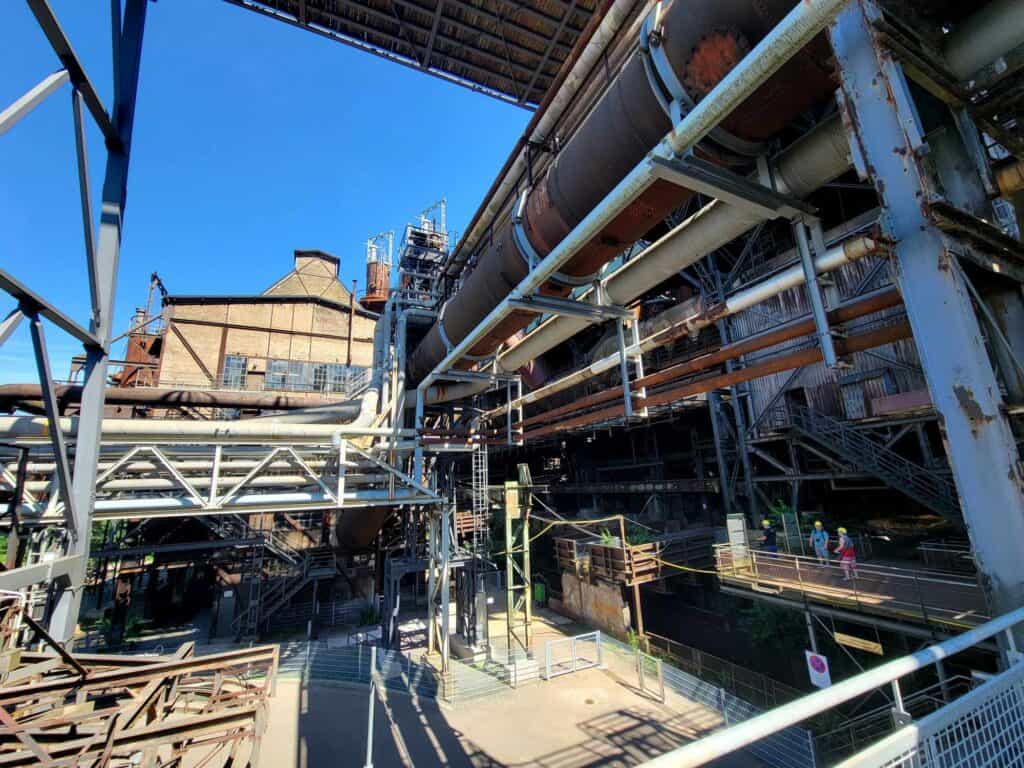
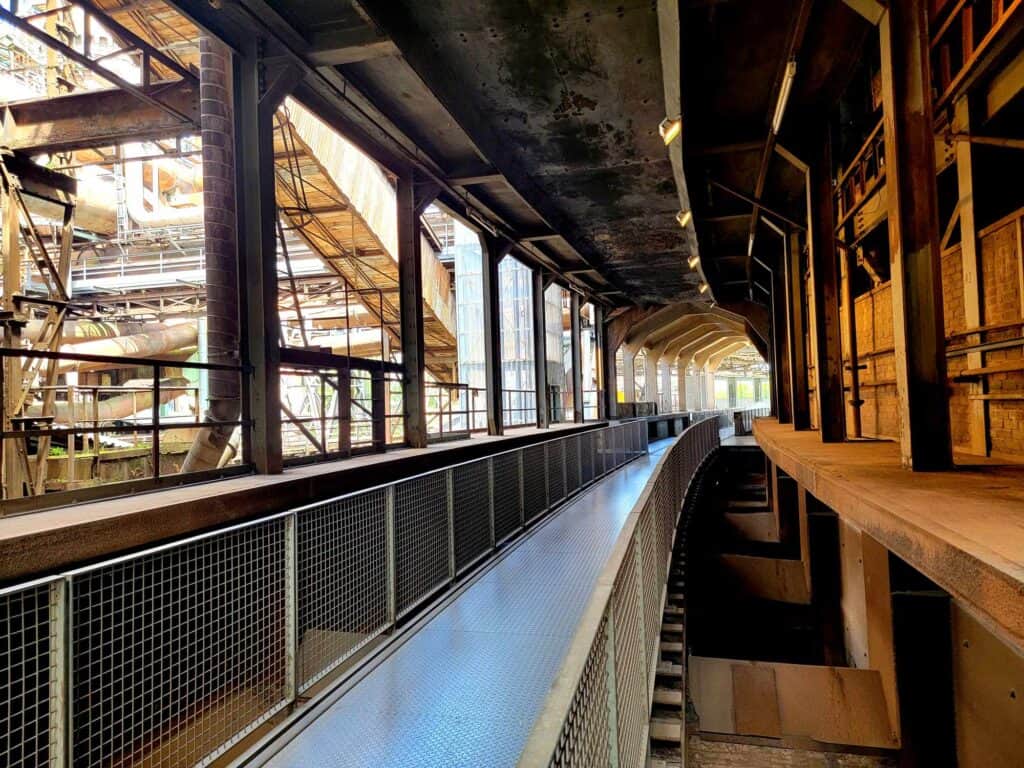
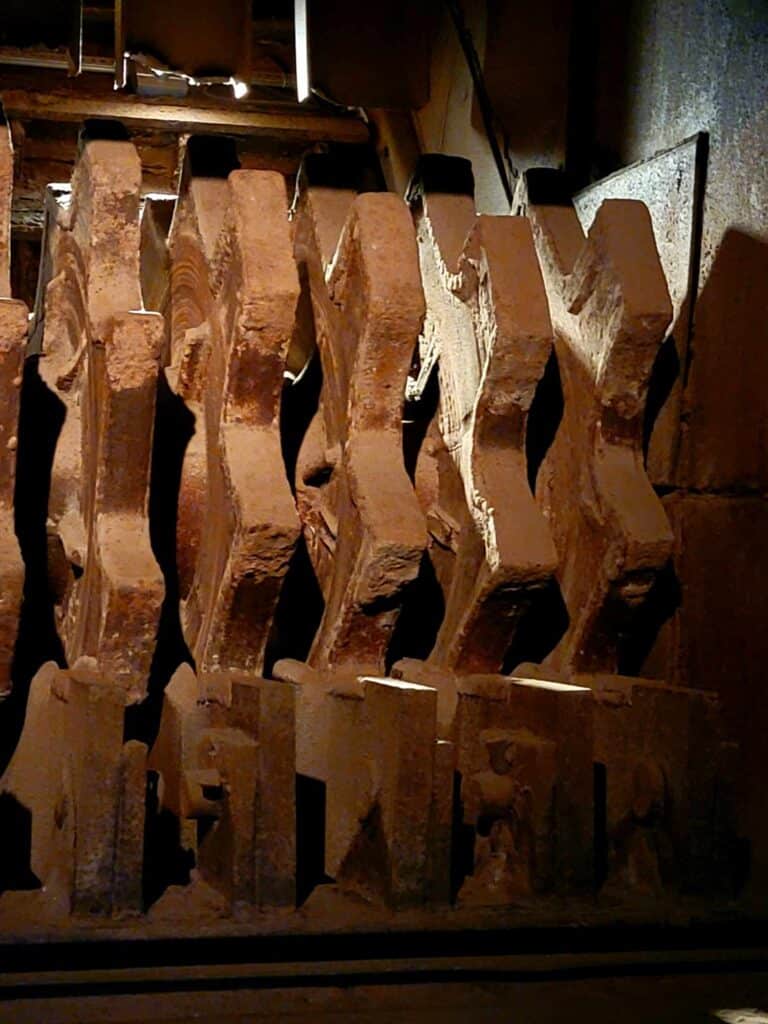
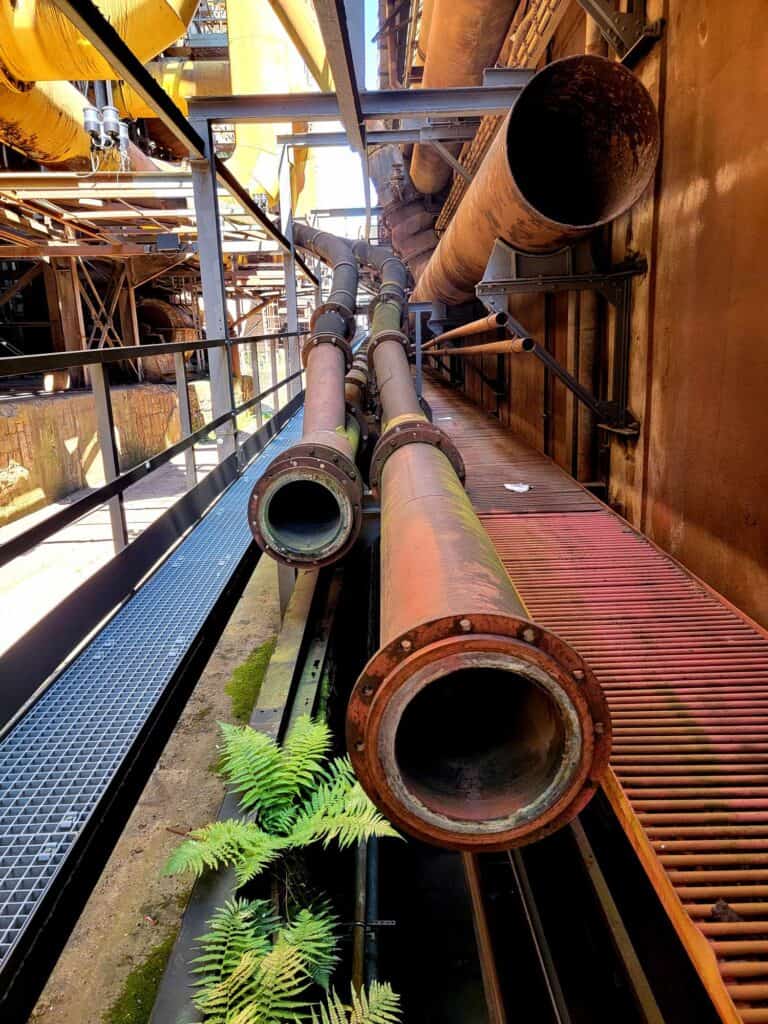
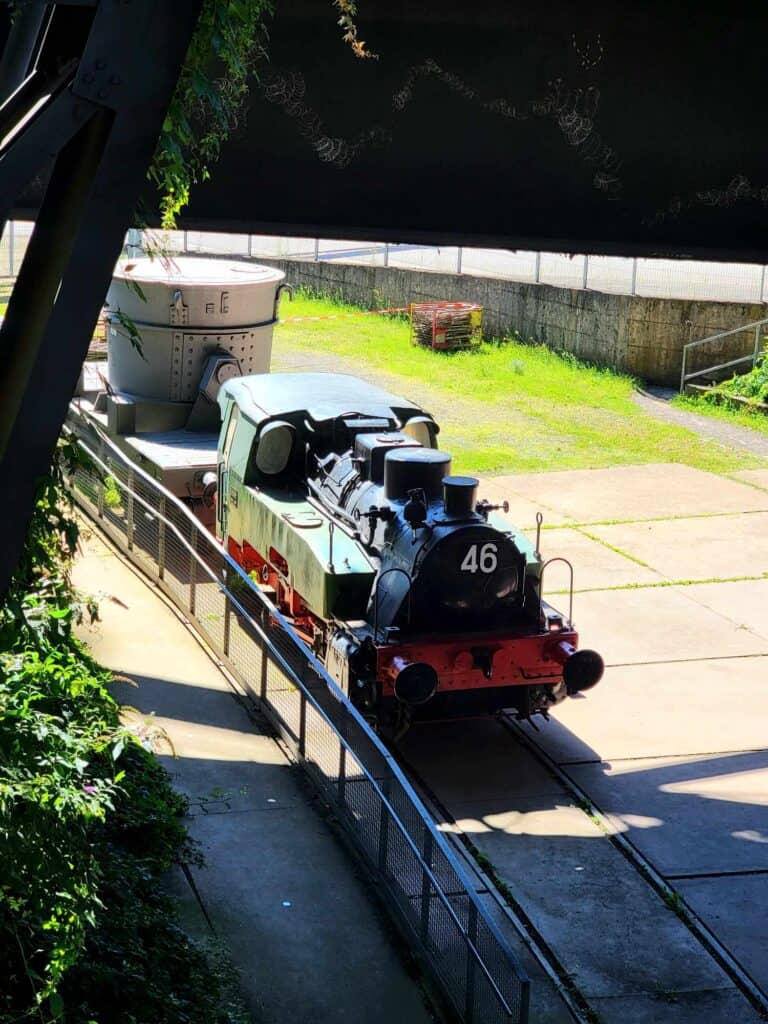
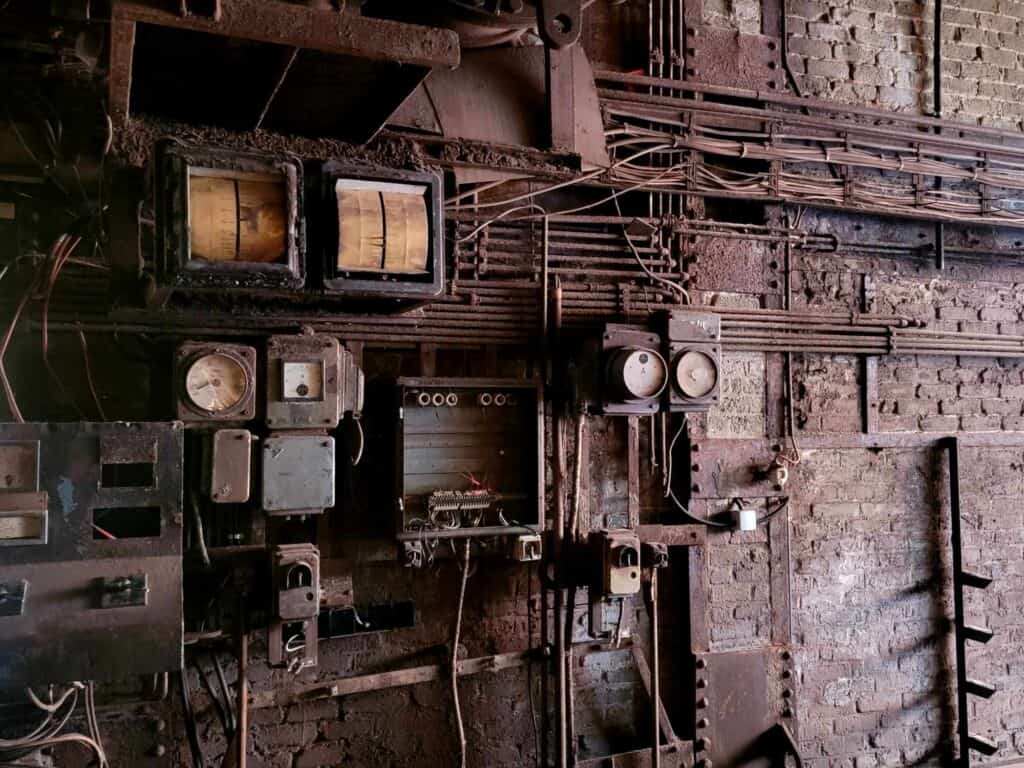
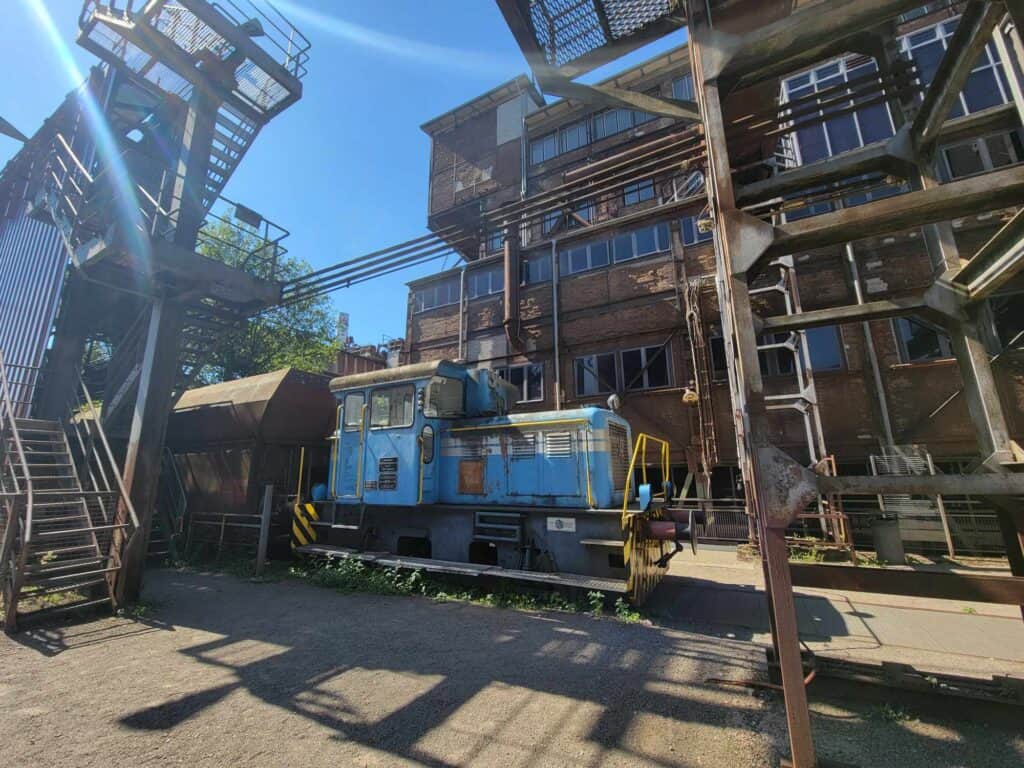
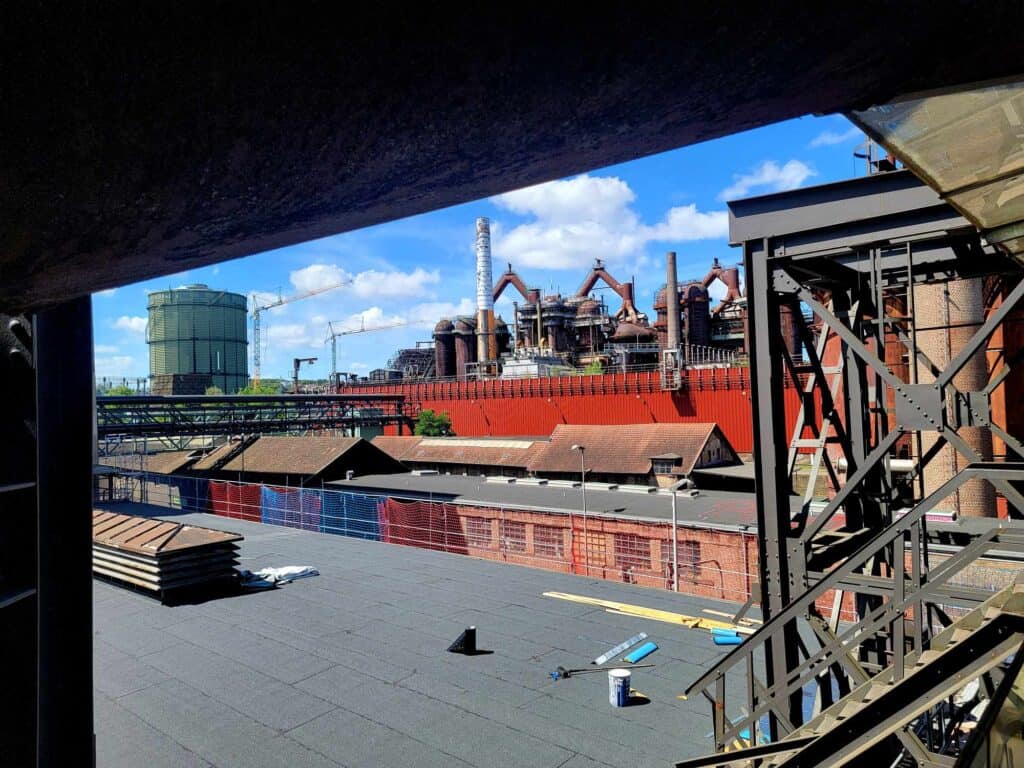
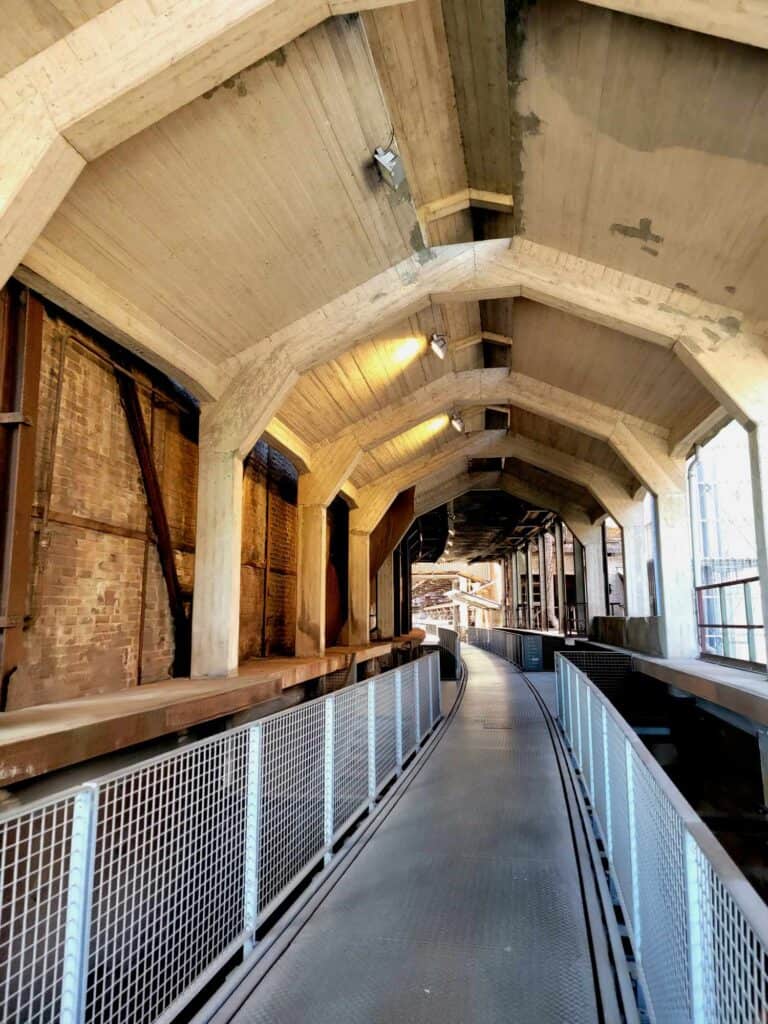
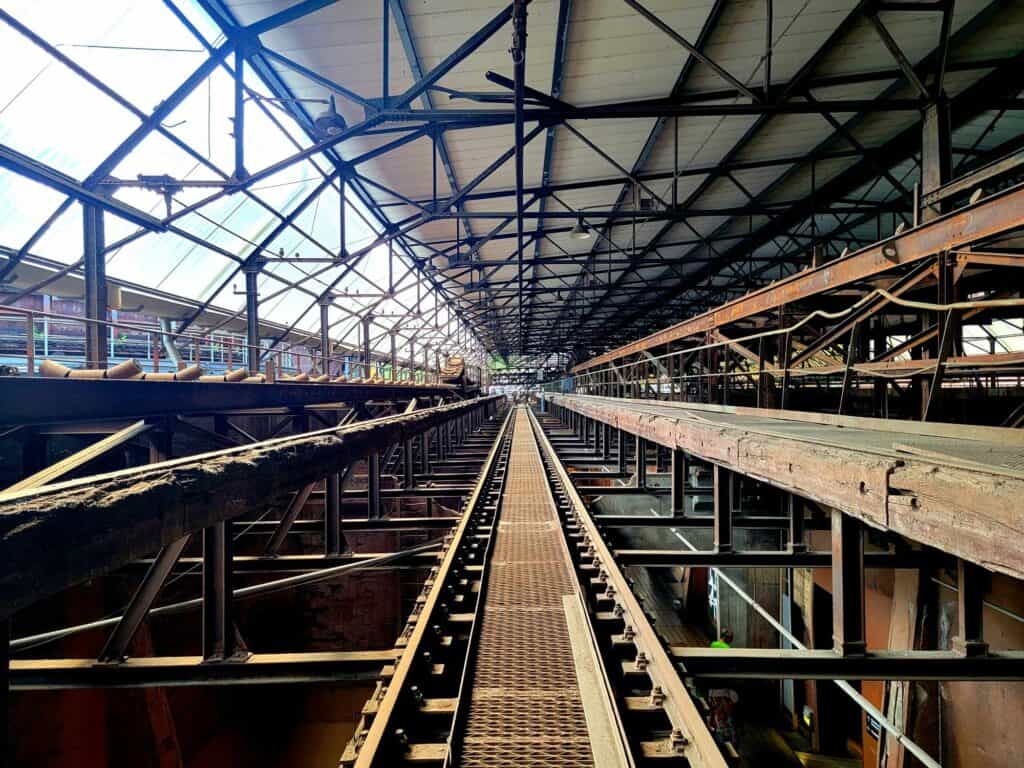
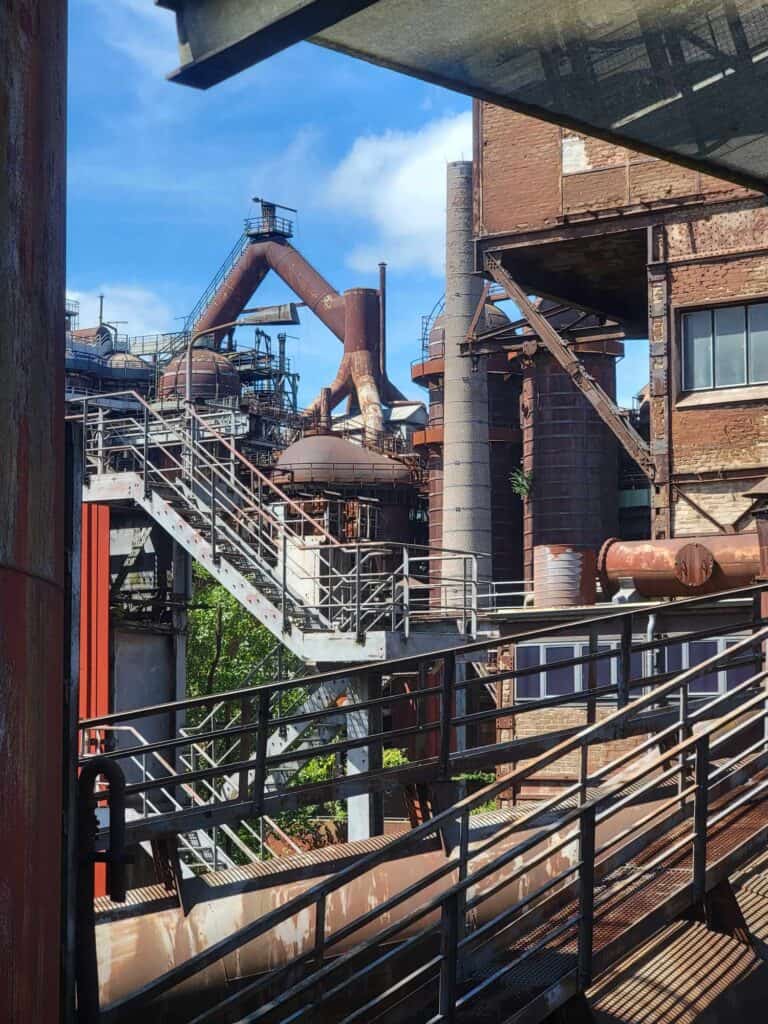
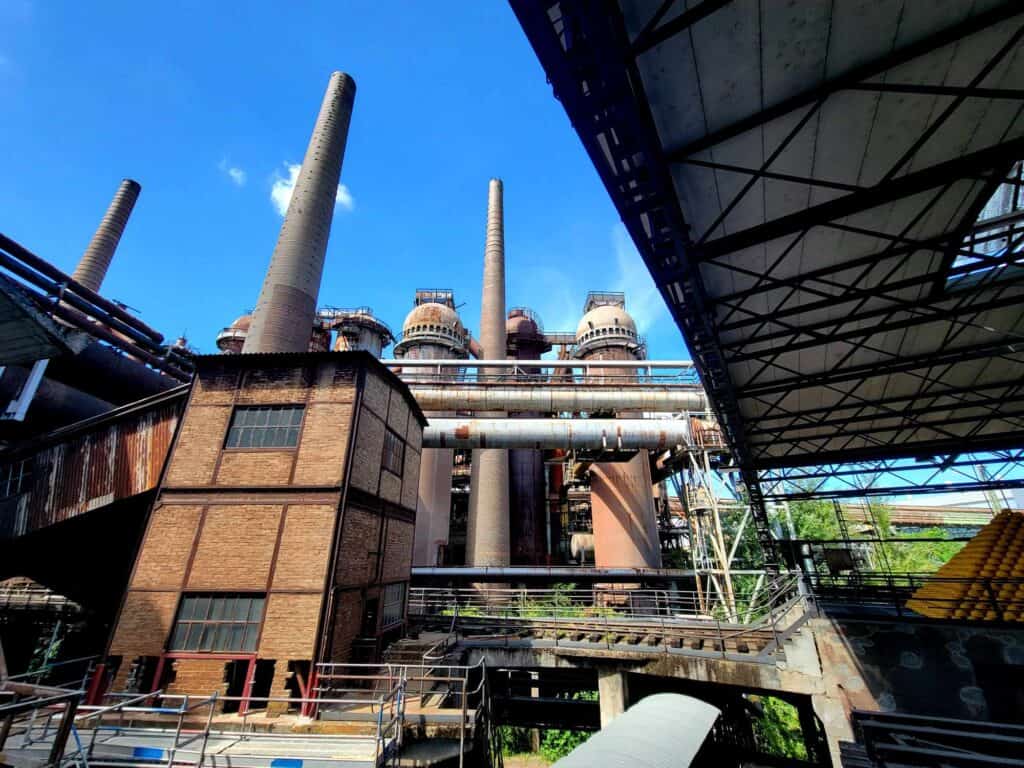
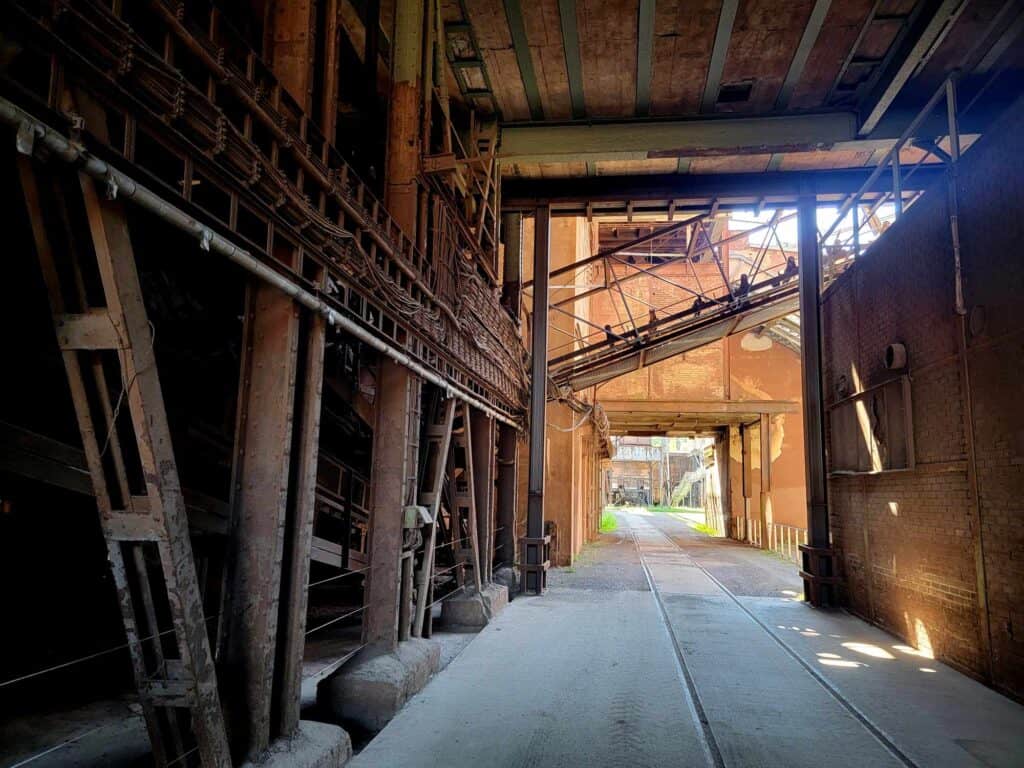
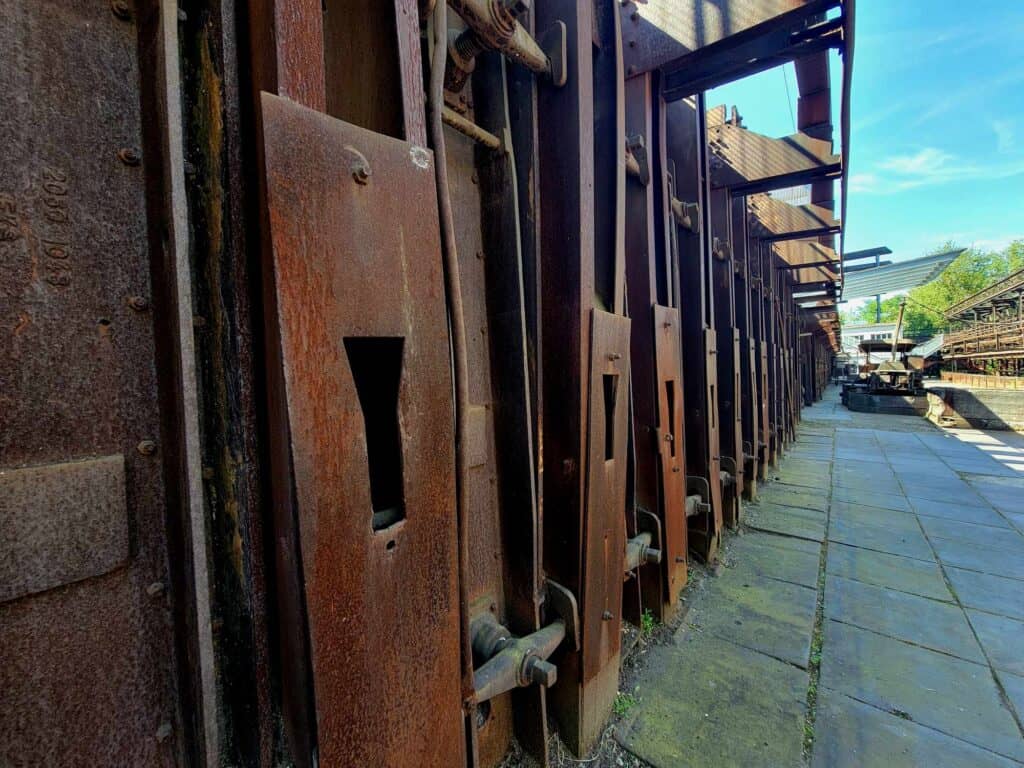
While the ironworks continued to expand, and embrace new technical innovations to improve and increase its production, the number of laborers required to keep the whole enterprise running increased rapidly too.
The Röchling family, headed up at this time by Karl’s son Hermann, was not only innovative in its production methods, but in its treatment of employees. They built a hospital for those who suffered injury at work, created safe housing for workers, and a program by which employees could own their own homes (which tied them to the ironworks). They also created a ”milk bar” providing free milk from the ironworks’ farm to babies, toddlers, and the sick. There was also advice available to new mothers to help stem the tide of infant mortality.
Hermann, the seventh son of the family, chosen to lead the company because of his intelligence, ambition, and skill seemed to be a well-liked and compassionate employer. His dark side would soon come to the fore.
The World Wars Changed Everything
World War I
As you can imagine, an ironworks of this scale was essential to Germany’s war effort in both World Wars. At the outset of World War I, production was initially halted. As the workforce were drafted to combat, an unfortunate transformation of the labor policies and practices at the ironworks began.
The war had caused a massive labor shortage, but had at the same time created an urgency to produce armaments and steel helmets. The works managed to get back into production with women laborers filling some of the empty jobs, and the illegal use of about 1400 prisoners of war as forced laborers for the rest. This new group of laborers included prisoners from Russia and France, and civil servants from Belgium and Italy.
After World War I, Hermann Röchling was accused of war crimes by France for theft and wanton destruction of French factories. After a lengthy process, a conviction, and a retrial where Röchling said he was only carrying out orders from Germany’s high command, he was acquitted, but his properties in France were never returned.
World War II
After a profitable interwar period, war came again. Due to its proximity to the front, the ironworks initially had to be abandoned. But by late 1939, production was in full swing. Just as in World War I, production shifted to full-scale focus on the war effort – the manufacture of gun barrels, grenades, tanks, airplane parts and other items necessary for Hitler’s Army and the Nazi war machine.
To achieve high production output, Röchling reimplemented the use of forced labor which escalated dramatically from its World War I levels. More than 12,000 men, women, and children from over 20 countries were subjected to forced labor at the Völklingen Ironworks. These prisoners of war, and civilians kidnapped and deported from the Soviet Union, endured horrific conditions with substandard housing and nutrition, and rampant physical, mental, and sexual abuse. Hundreds would die of injury, exhaustion, disease, malnutrition, abuse and neglect.
But Hermann Röchling proved to be more than a tycoon who was only interested in profit. He was also a trusted advisor and confidant of Adolf Hitler, a virulent antisemite, and a devout and committed member of the Nazi party and its ideology. He had welcomed Hitler’s rise to power, and in 1935 he officially joined the Nazi Party. He became a “Wehrwirtschaftsfürer,” a leader in the war economy, playing an important role in the production of armaments for Germany.
Hermann Röchling Faces Justice
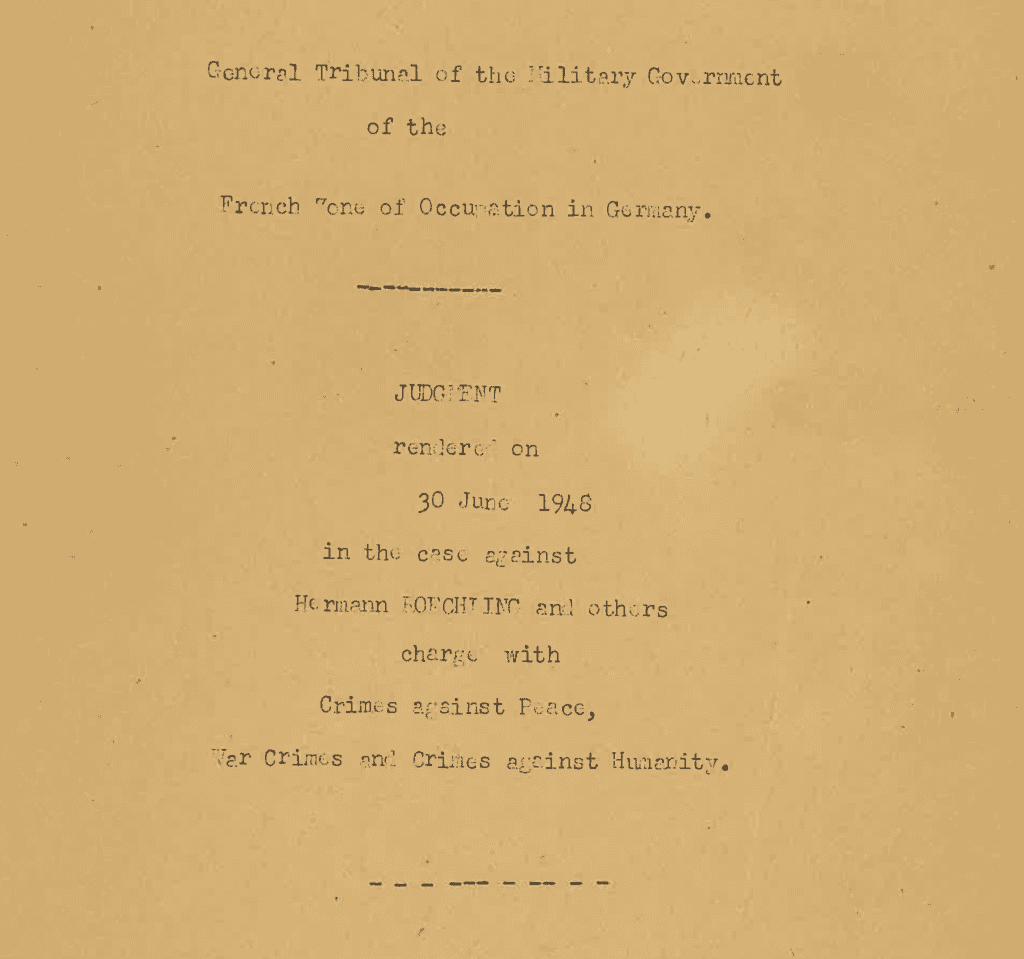
Hermann Röchling’s close ties with Hitler, his indispensable contribution to manufacturing essential components of the German war machine, his illegal and inhumane forced labor practices at the ironworks, and his personal enrichment through his war efforts ensured that he would come to trial and face justice after the war.
Röchling was one of the more prominent figures indicted at the Nuremberg Trials (specifically, at the I.G. Farben Trial, which focused on the role of those in the German chemical industry.)
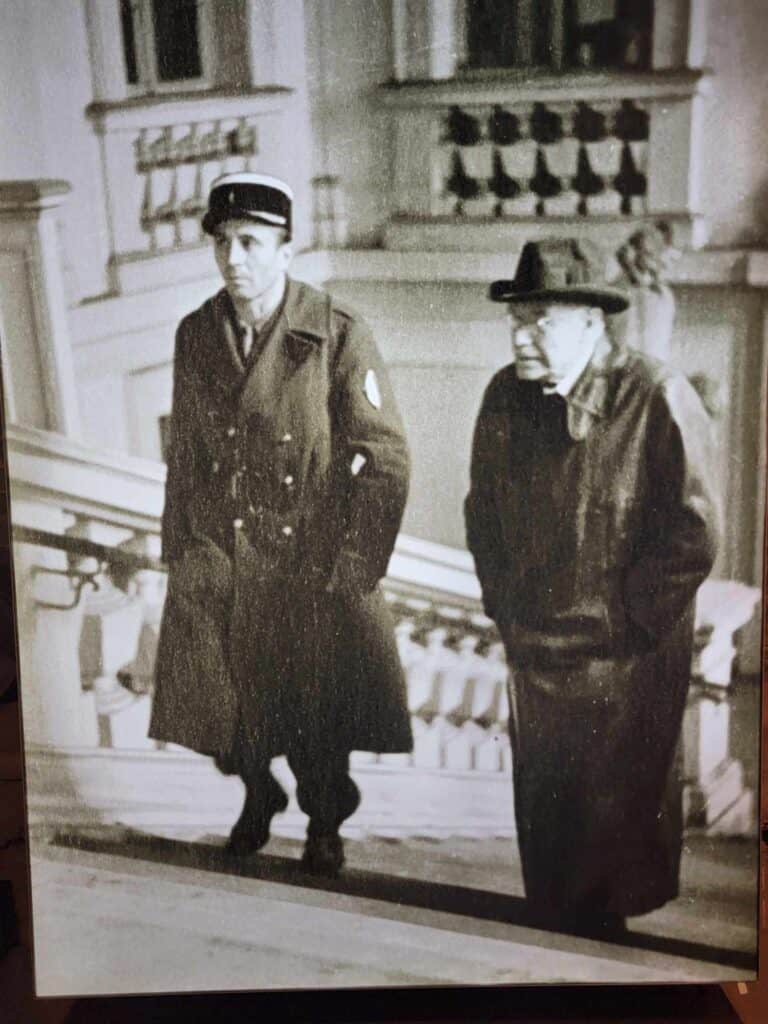
The charges against Röchling were extensive and centered on:
- Exploitation of forced labor: This included his inhumane use of concentration camp inmates and prisoners of war in the Volklingen Ironworks.
- War profiteering: Accusations focused on the Röchling family’s massive self-enrichment through war-related contracts.
- Urging Hitler to invade the Balkans to take control of Balkan industries.
- Contribution to the Nazi war effort: Röchling was charged with supporting the German war machine through the production of armaments.
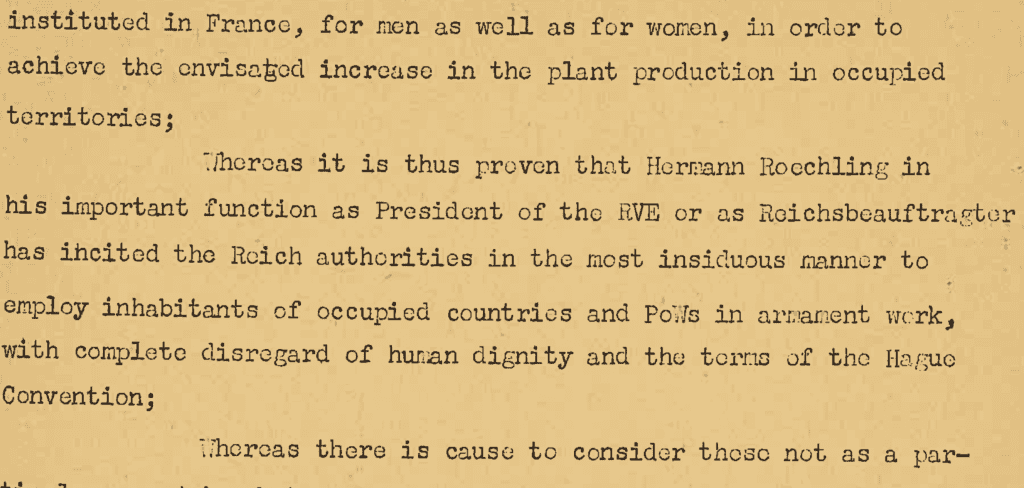
This time the “I was just following orders” defense didn’t work. Neither did the “I didn’t really notice the emaciated and abused forced laborers” defense. Röchling was found guilty of these charges and sentenced to seven years imprisonment, and all his personal wealth was confiscated. The French took temporary control of the ironworks.
Eventually, Röchling received a conditional discharge to a sanatorium in the Black Forest where he lived his remaining few years. He continued to be regarded in high esteem by many Saarlanders because of his former good treatment of his German work force, and because of the belief he had been unfairly convicted.
Many others considered his time served as far too lenient, especially considering the scale of the crimes committed under his leadership, and the particularly harsh treatment of forced laborers.
The Röchlings’ Post-War Resurgence
The Röchling family began to rebuild their power and influence in 1956 when Saarland became part of Germany and the ironworks was returned to them. A significant industrial asset it was utilized heavily in the post-war era as massive reconstruction efforts required iron and steel. The business was well-positioned to capitalize on this need.
And, of course, the family had retained connections within the political and economic elite which helped them navigate this post-war landscape, and begin rebuilding their wealth.
Eventually, after shifting focus with the times, the Röchling Group sold its interest in the ironworks and is now a global player in the plastics industry. Their website’s timeline of company history jumps from 1927 to 1974 with no mention of the war, or the war crimes, or post-war success built on the reconstruction of a country torn apart by those crimes. Or of Hermann Röchling.
Preservation and Legacy

The demand for materials from Völklingen ironworks declined as new materials and technologies emerged over the years. Finally, in 1986, after more than a century of operation, the blast furnaces went cold and the ironworks shuttered.
Fortunately for us, rather than facing demolition as so many others of its kind did, the Völklingen Ironworks got a new lease on life, in a whole new form. In recognition of its exceptional historical and industrial significance, it was declared a UNESCO World Heritage Site in 1994. This decision transformed the ironworks into a cultural center which not only faces the reality of the ironworks’ past, but also serves as an educational center, and a showplace for art exhibitions.
What You Can Expect at Völklingen Ironworks Today
Industrial Spaces and Art
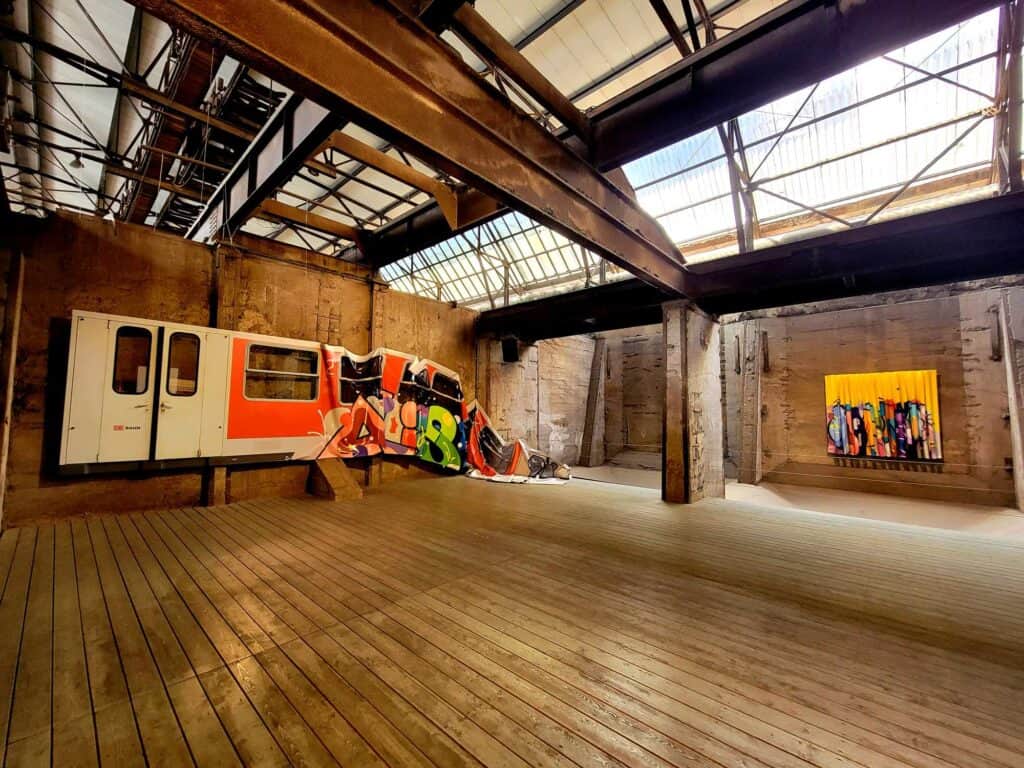
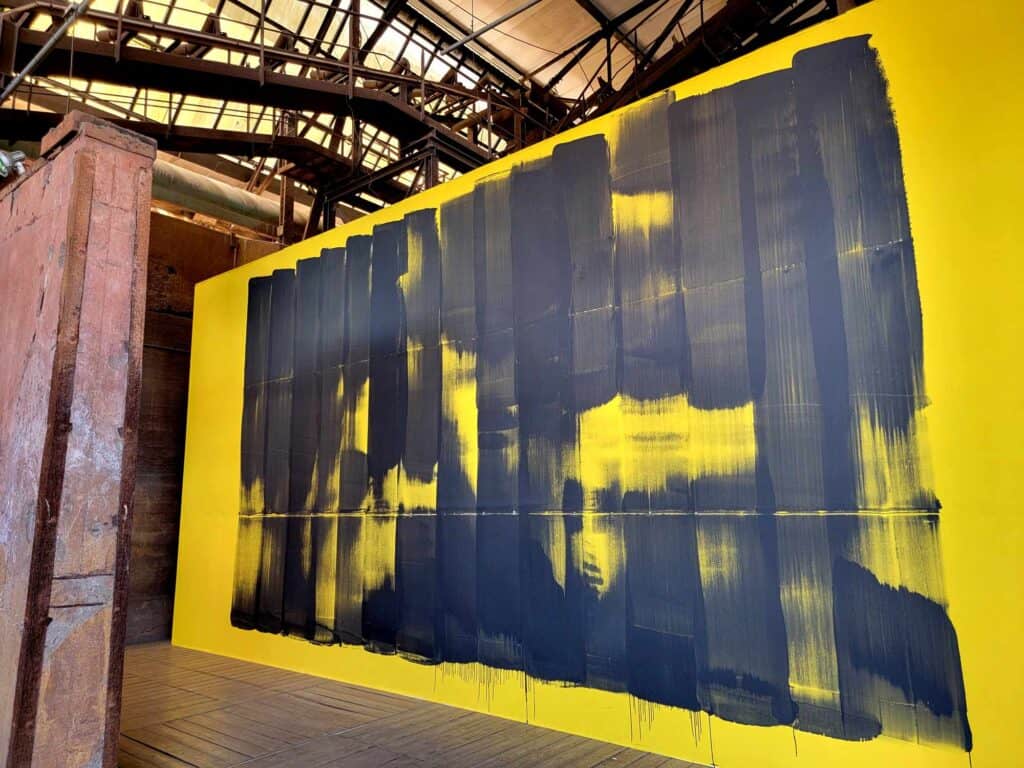
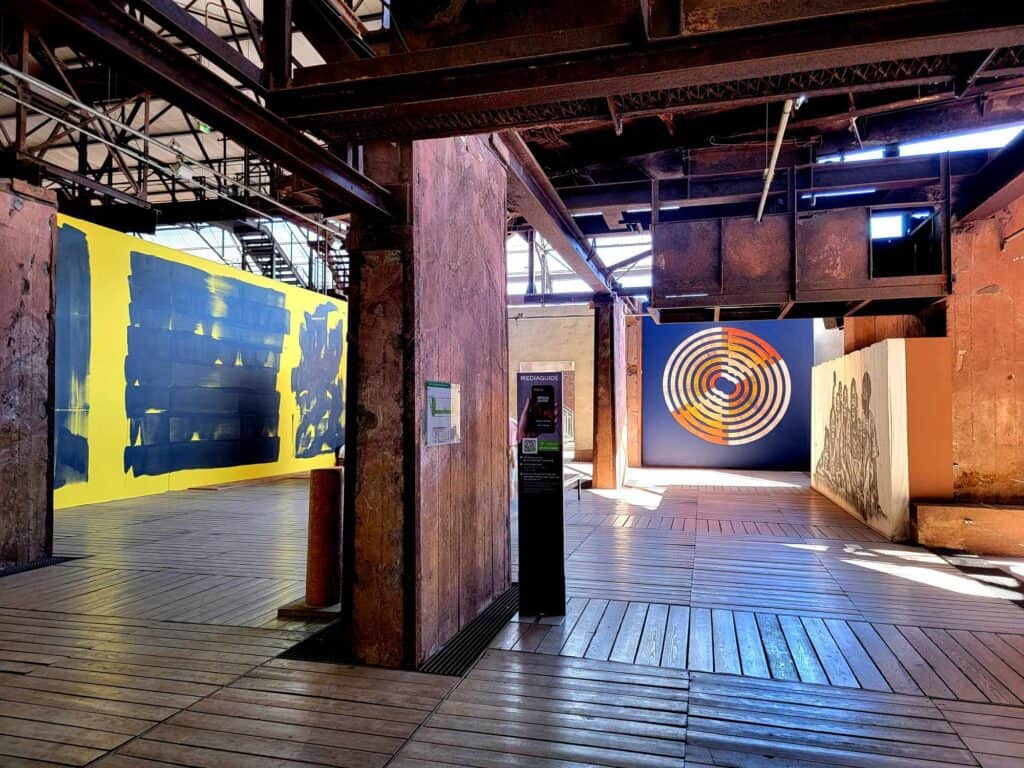
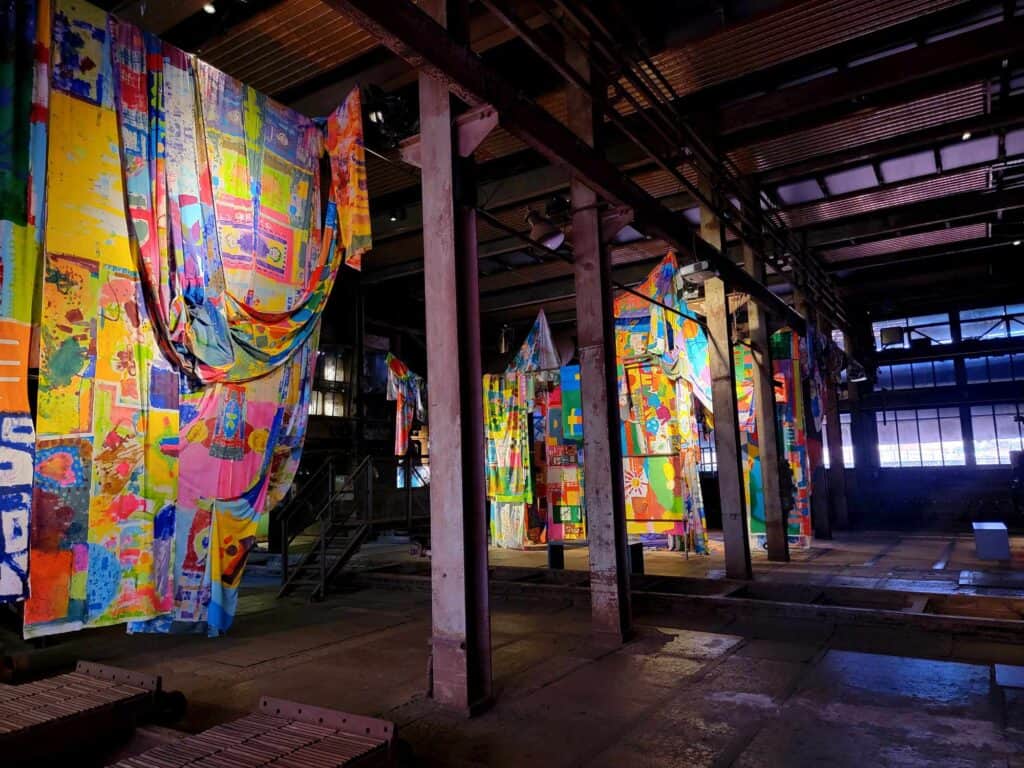
I wasn’t really sure what to expect from our visit, but I was pleasantly surprised. The size and scale of the Volklingen Ironworks complex was awesome (in the true sense of that word). And as a fan of industrial interior design, the eye candy was everywhere!
The spaces alternate function between showplaces for contemporary art, organized and beautifully curated temporary exhibitions, some areas left just as they were, small video stations showing interviews and historical footage, and even a small corner called “Paradise” which has some vegetable gardens, wildflowers, and greenery which is creeping in from the surroundings, swallowing train tracks and popping out from cracks in the pavers.
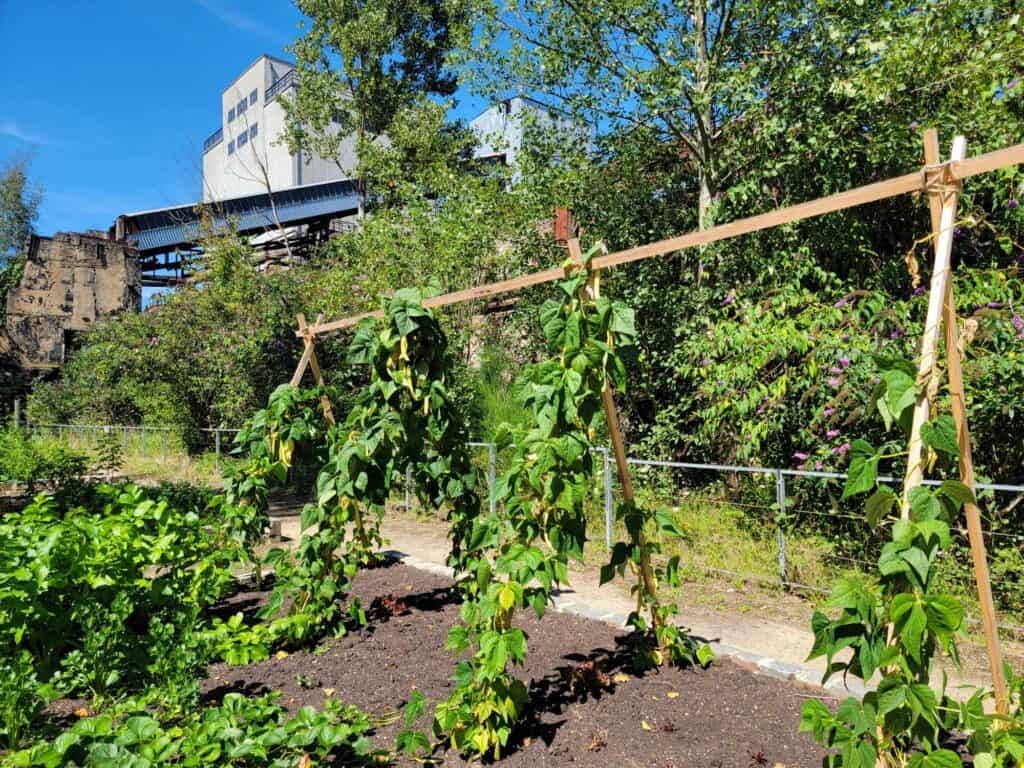
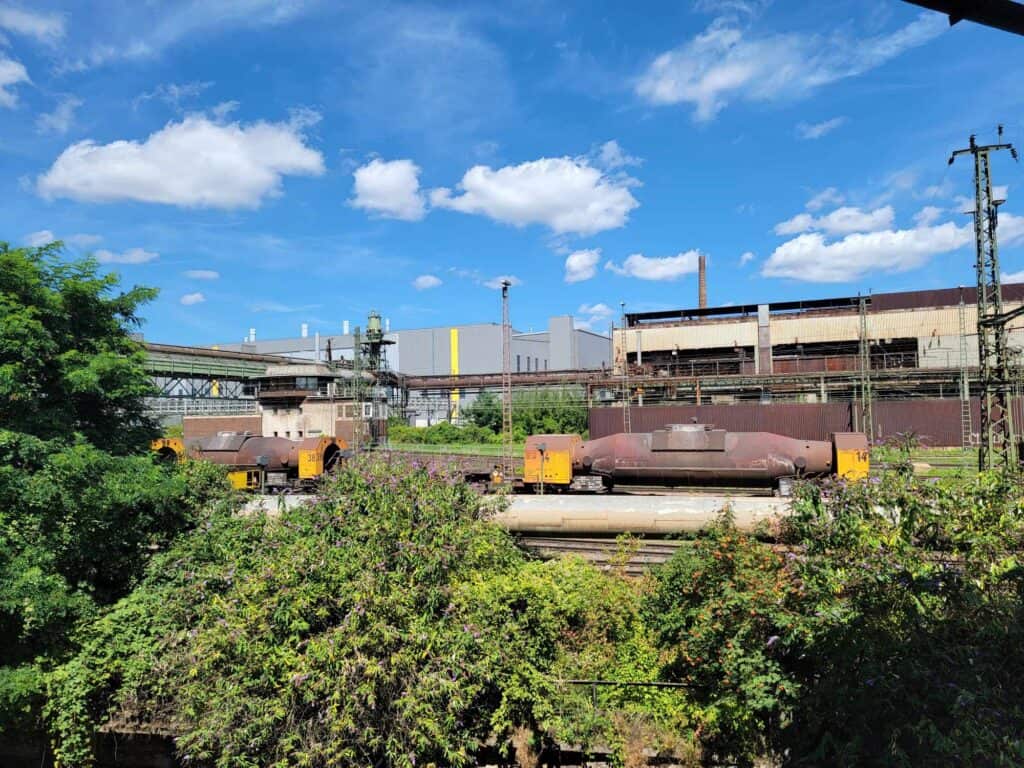
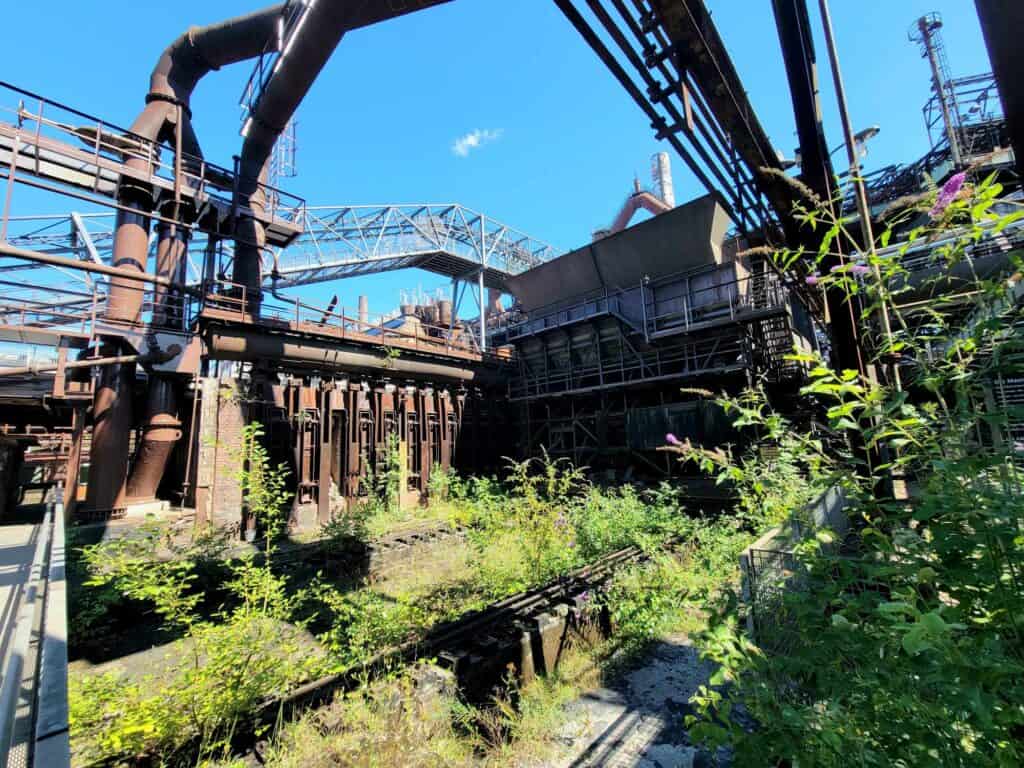
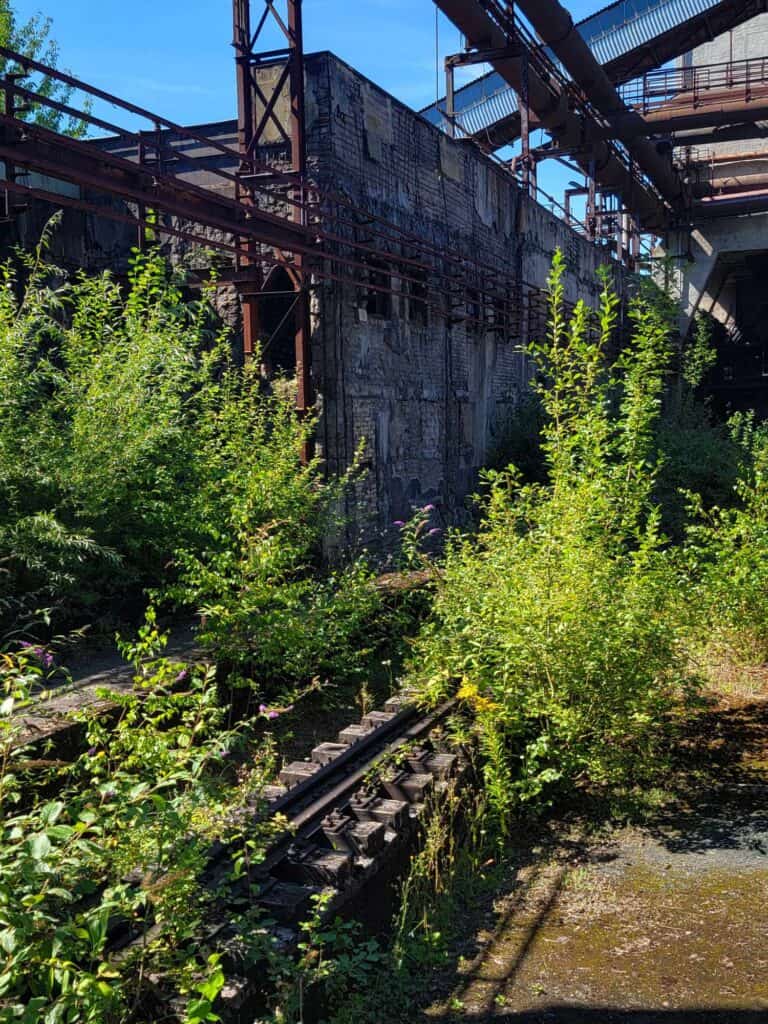
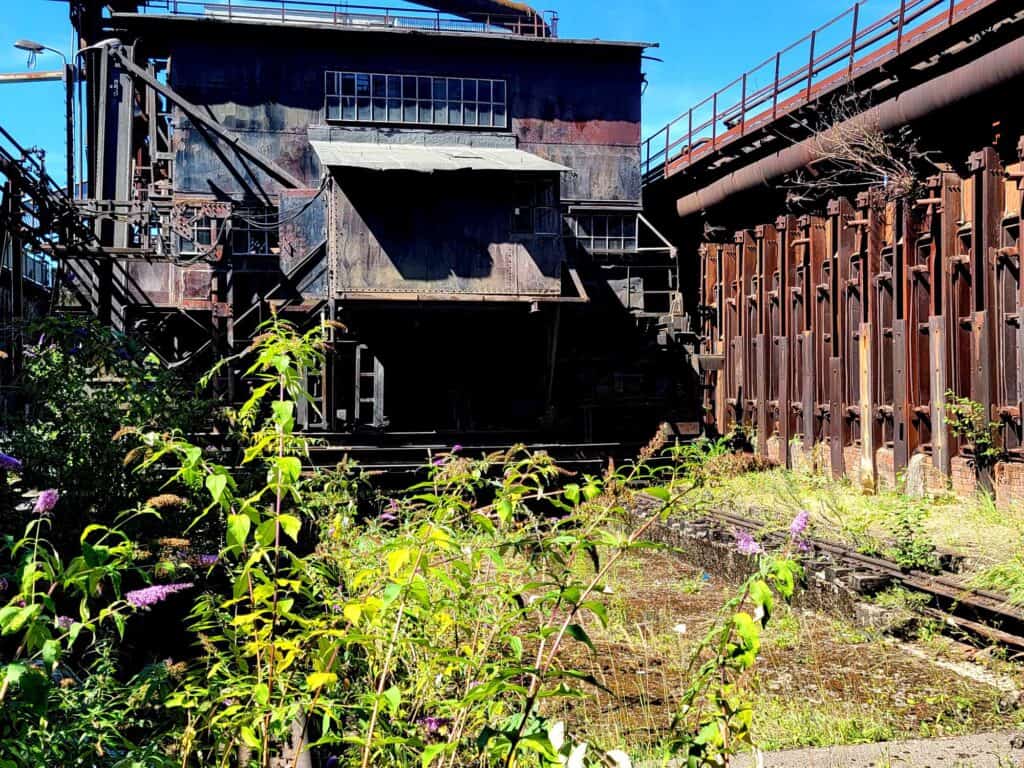
Memorial to the Forced Laborers
Despite the obvious whitewashing by the Röchling Group, UNESCO has ensured that the important war history of the ironworks is preserved for all time.
To fully absorb the history of this remarkable place, it’s important to celebrate the technology, innovation, and even the forward-thinking and humane treatment of employees during peace time, while never forgetting its dark past as a vital component of the Nazi war machine, and the horrific treatment and abuse of its forced laborers. It’s a lot to wrap your head around.
I really was happy to see that the Volklingen Ironworks is committed to acknowledging and commemorating the victims of forced labor within its walls.

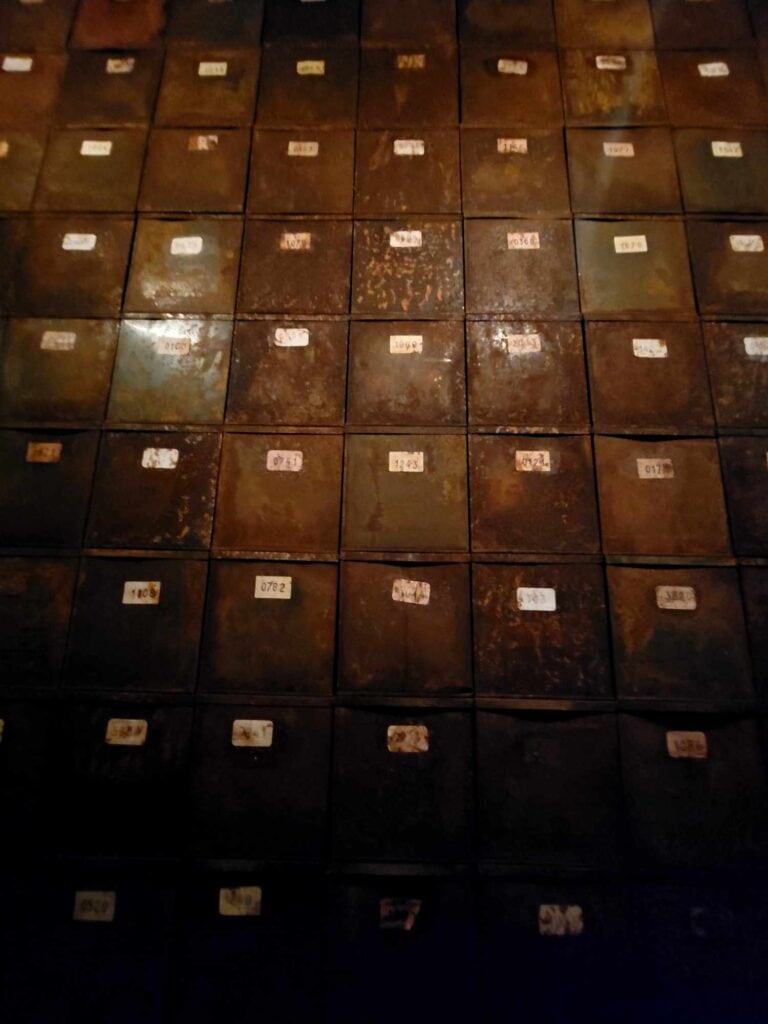
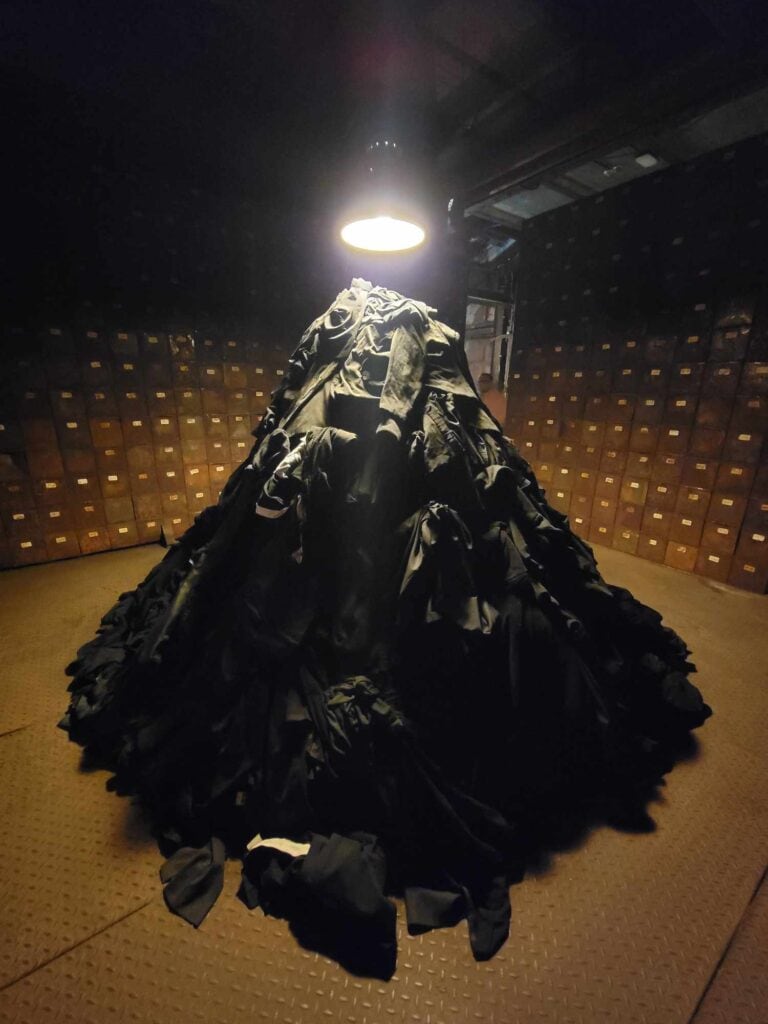
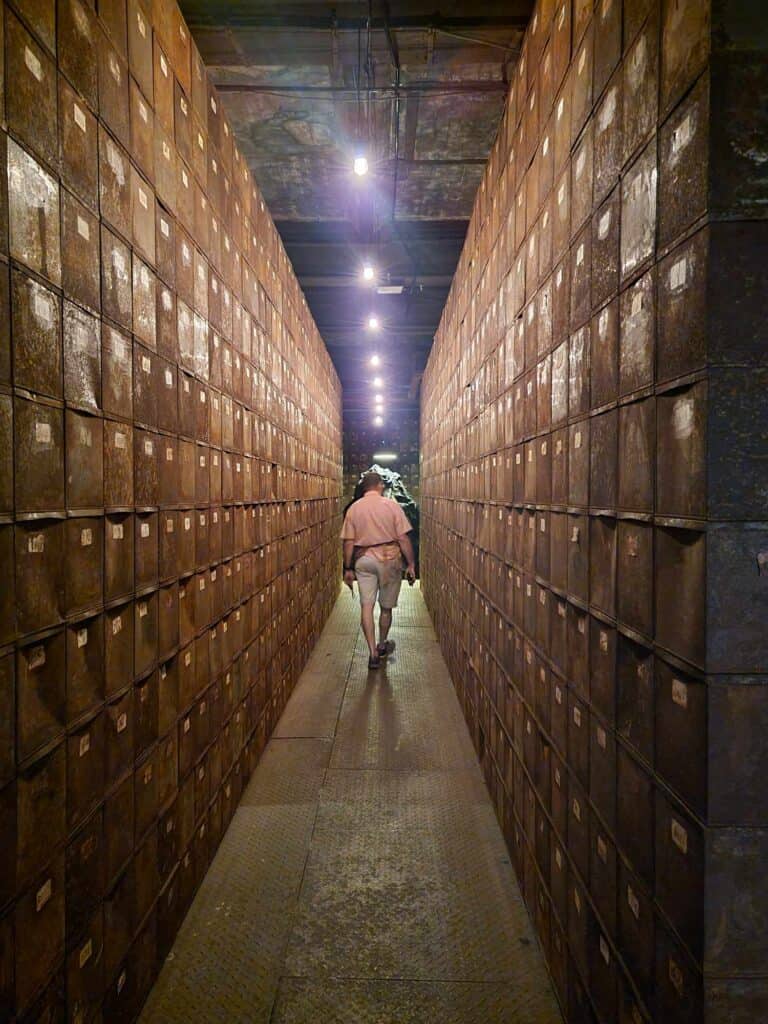
There’s a really remarkable installation by French artist Christian Boltanski which memorializes the suffering endured by these men, women, and children. As you walk down a dimly-lit corridor of numbered boxes, you hear whispering. It takes a moment to realize that you are hearing the names of the people imprisoned here. There are French names, Russian names, Polish names, Italian names… men and women.
At the end of the corridor, under one glaring industrial light fixture is a pile of clothing representing the uniforms they wore. This chamber is again created of numbered boxes, each representing one person. There are thousands.
The Röchling Family Exhibit
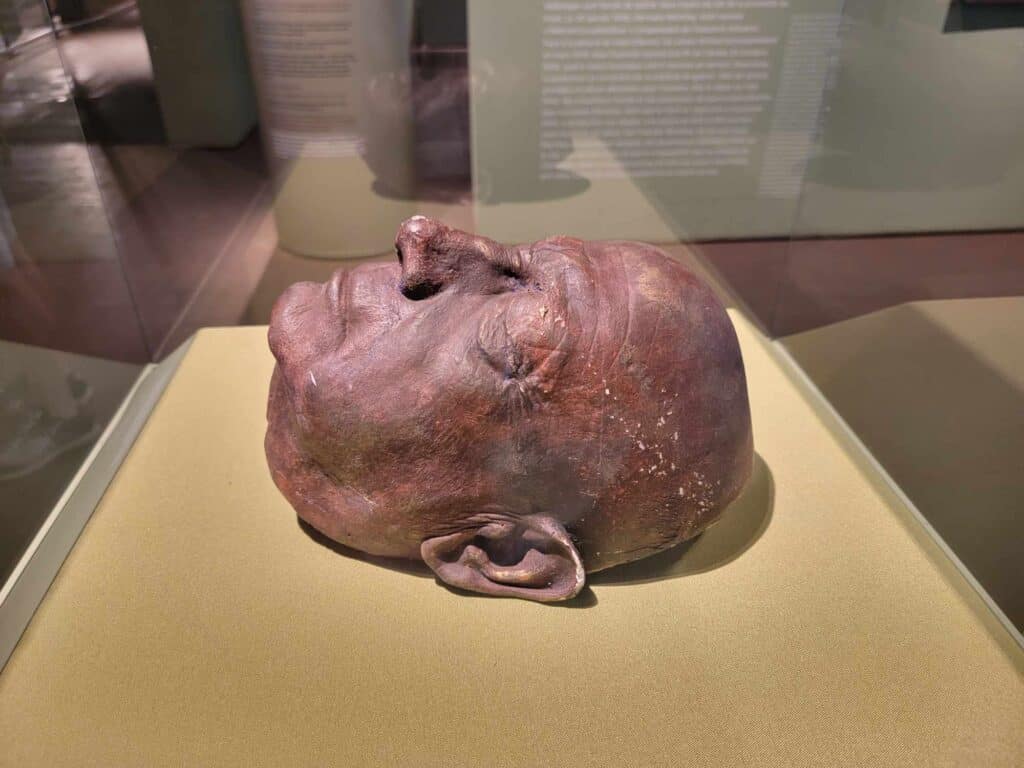
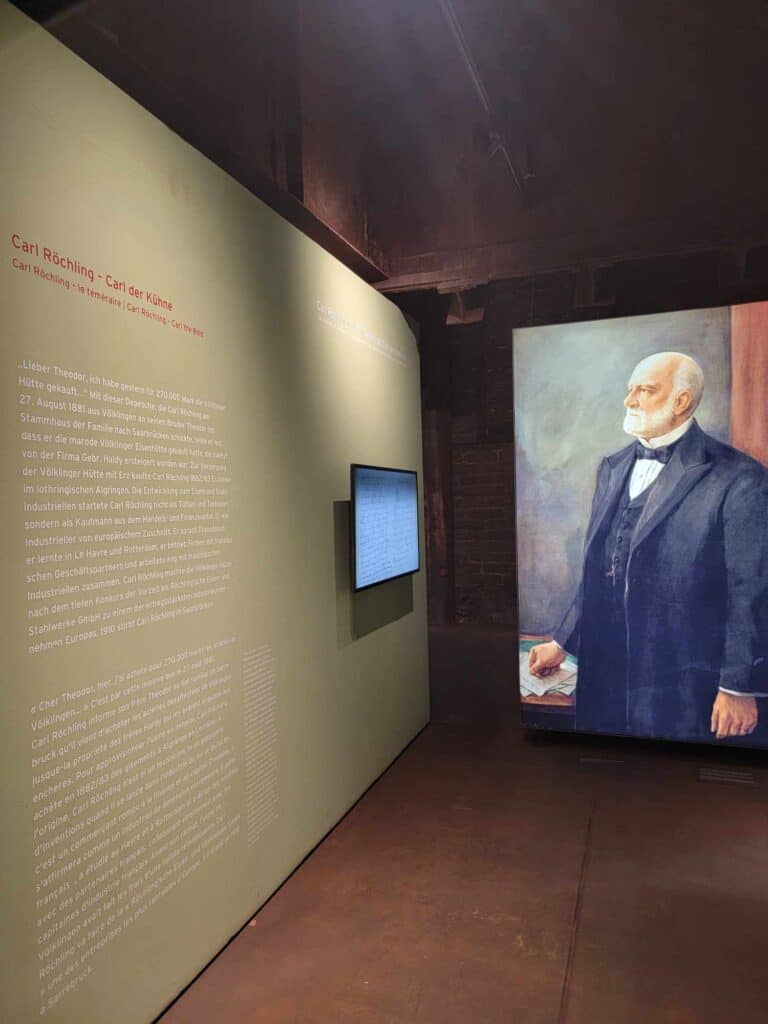
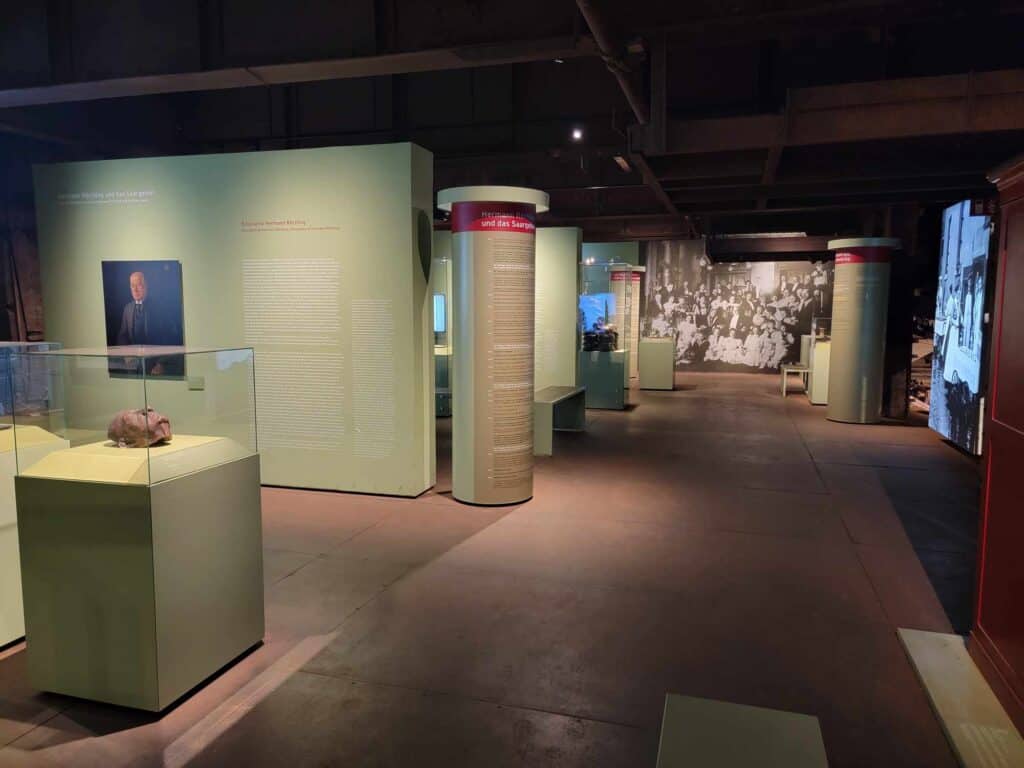
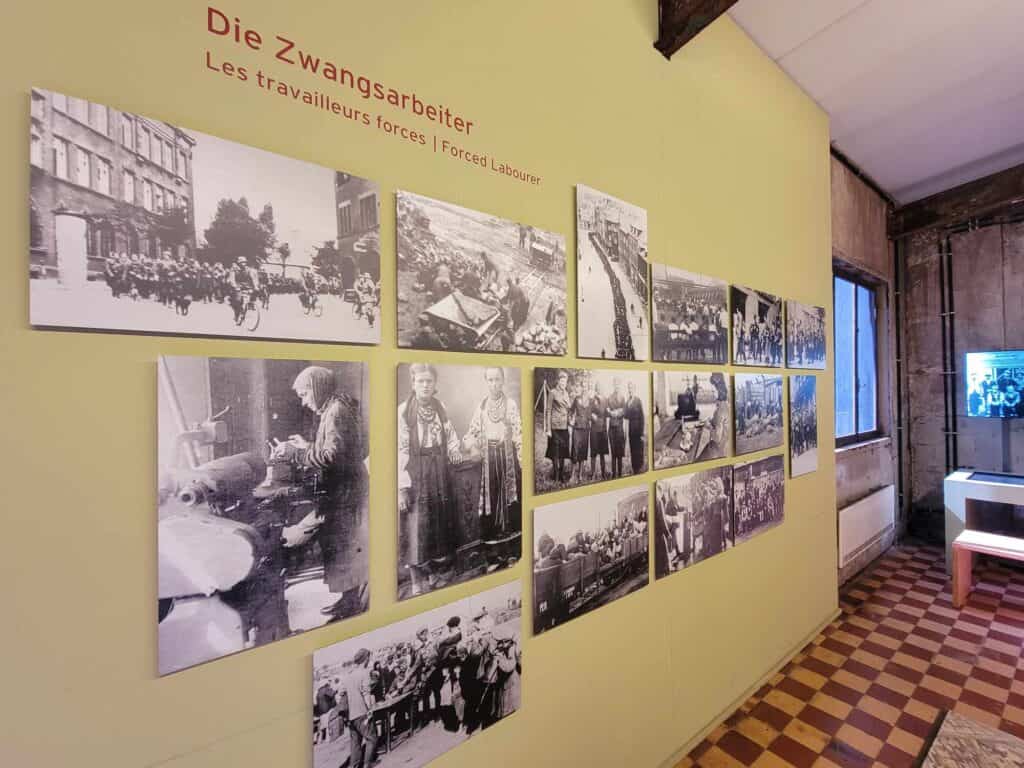
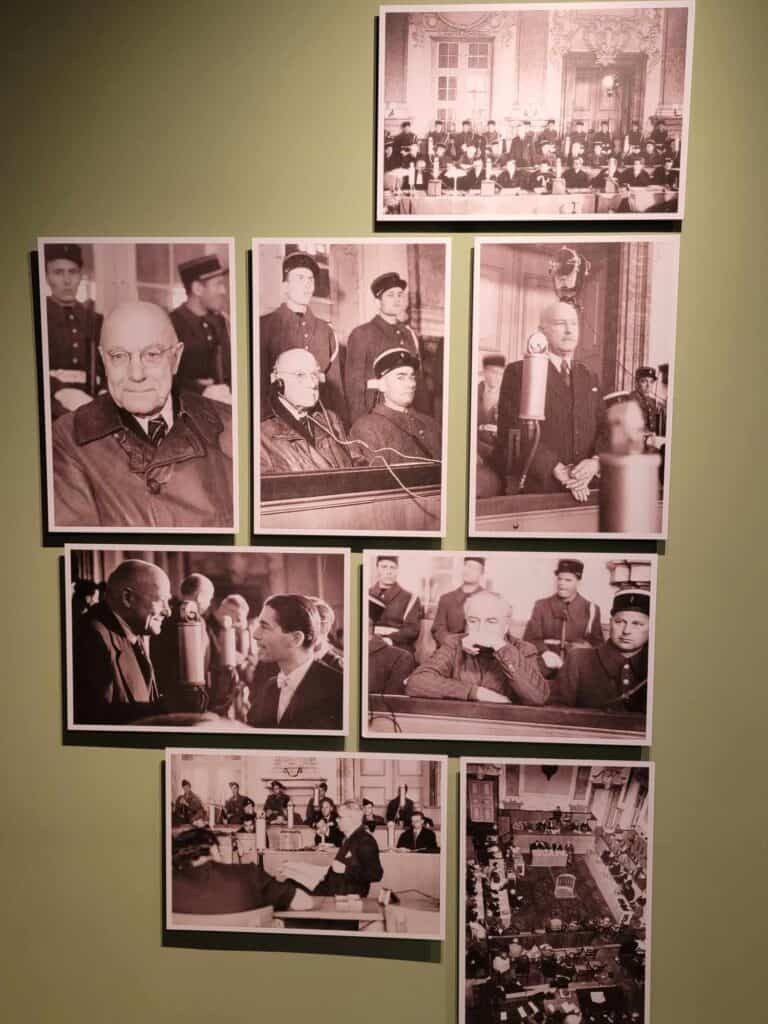
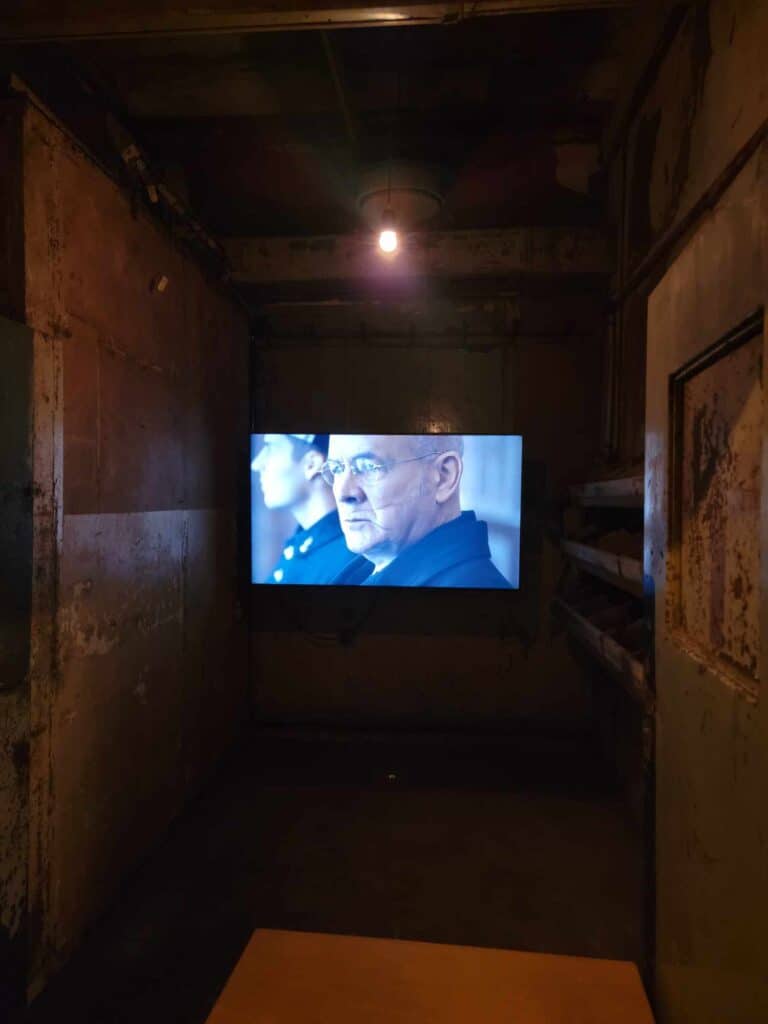
An entire gallery is devoted to the history of the Röchling family and their role in the development and expansion of the ironworks. Again, it not only covers the remarkable production and innovation that occurred, but the dark side as well. It details Hermann Röchling’s conviction of war crimes and talks more about the forced laborers. There are many photos, relics, and a video feature.
Temporary Exhibitions
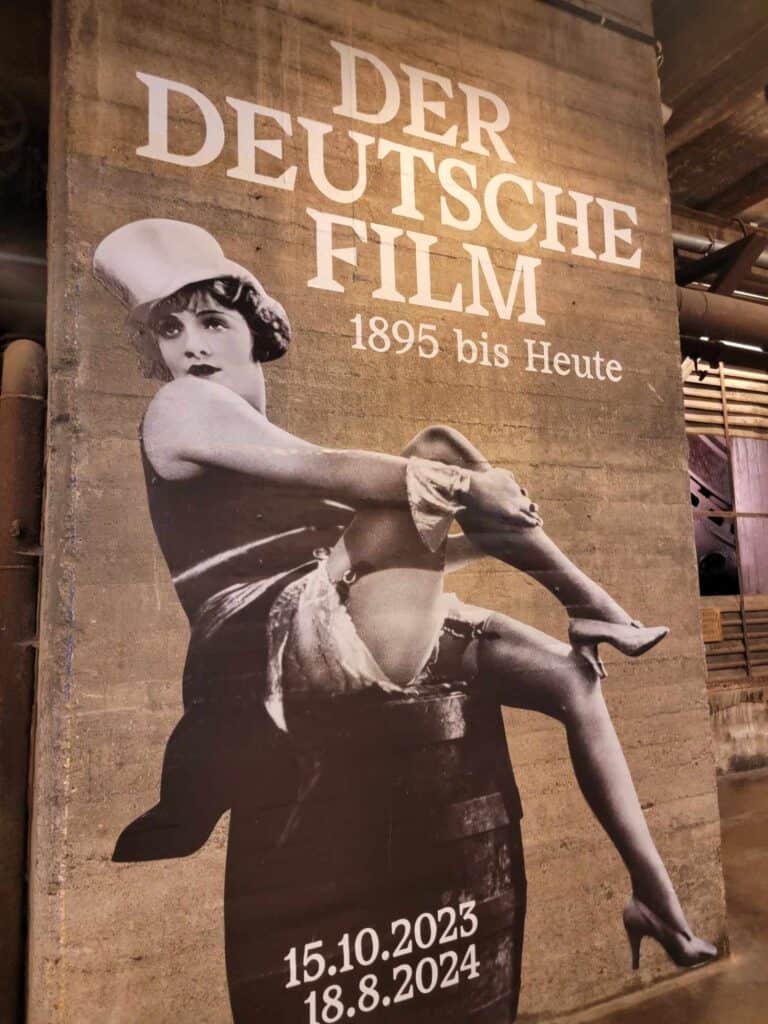
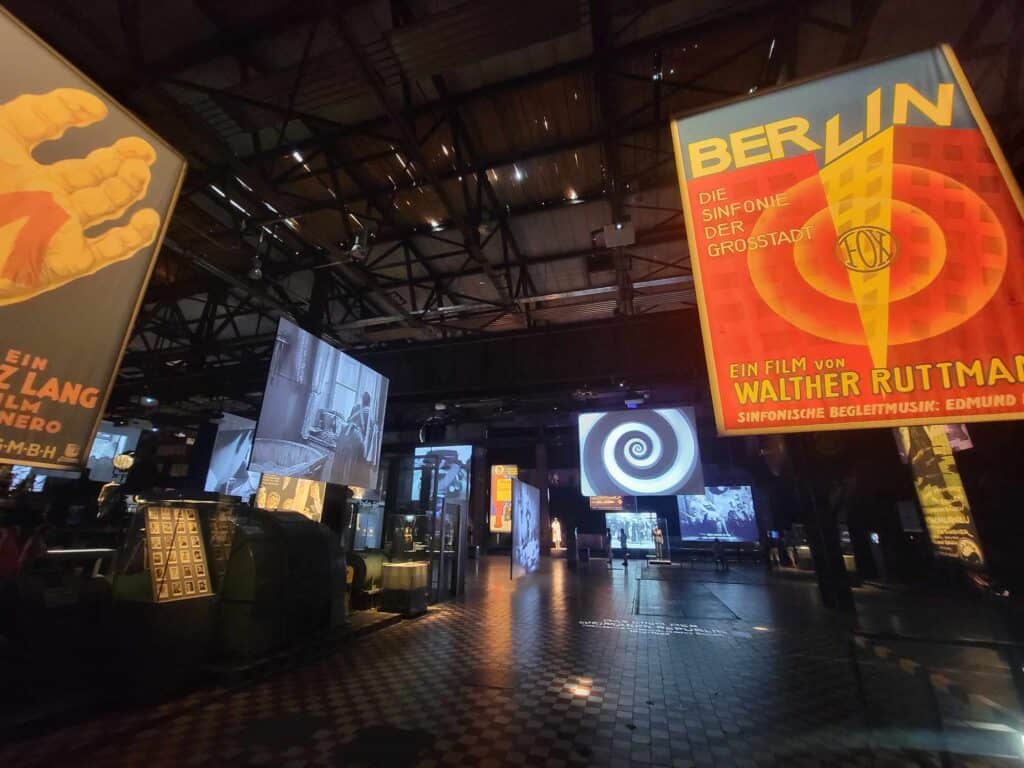
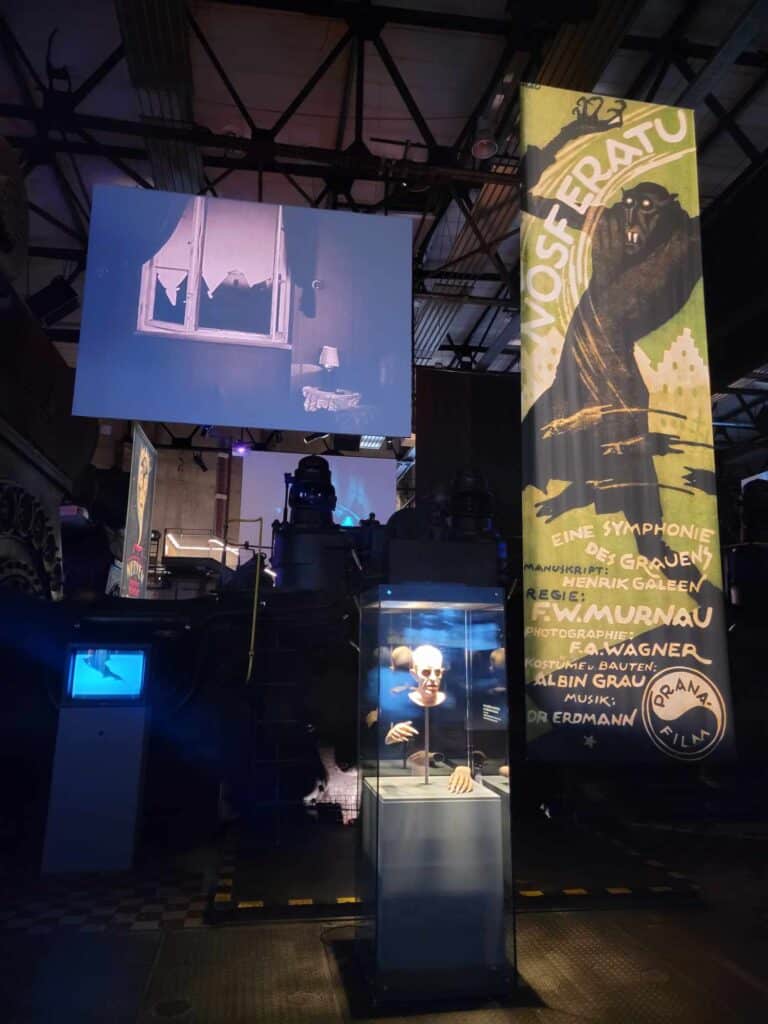
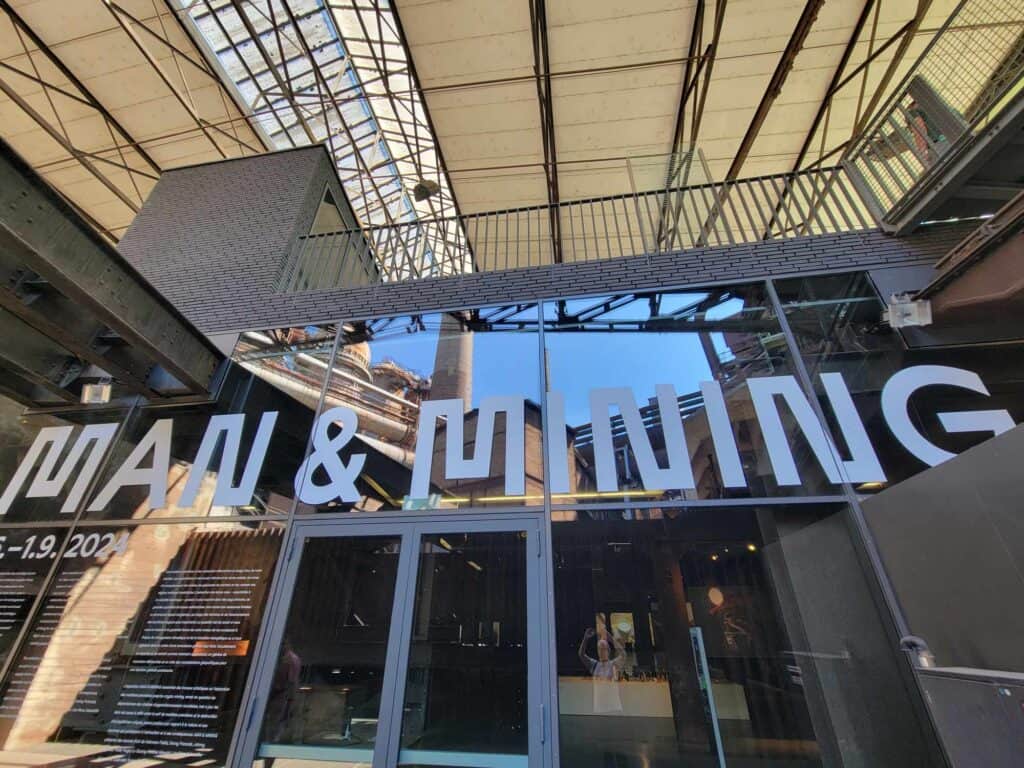
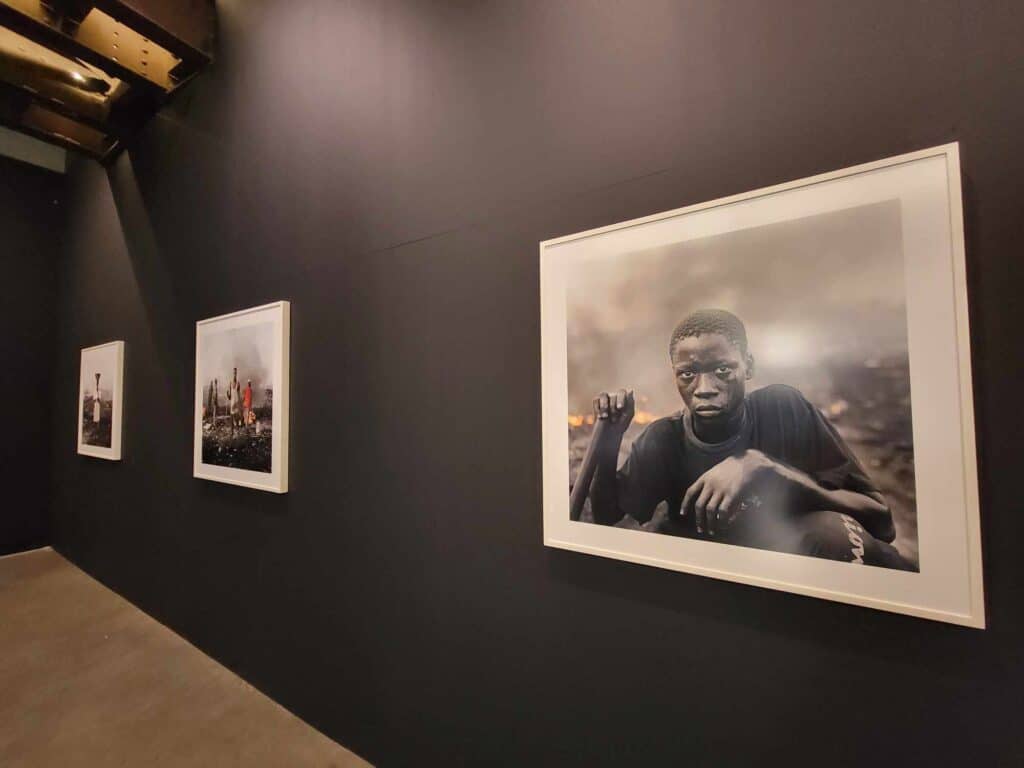
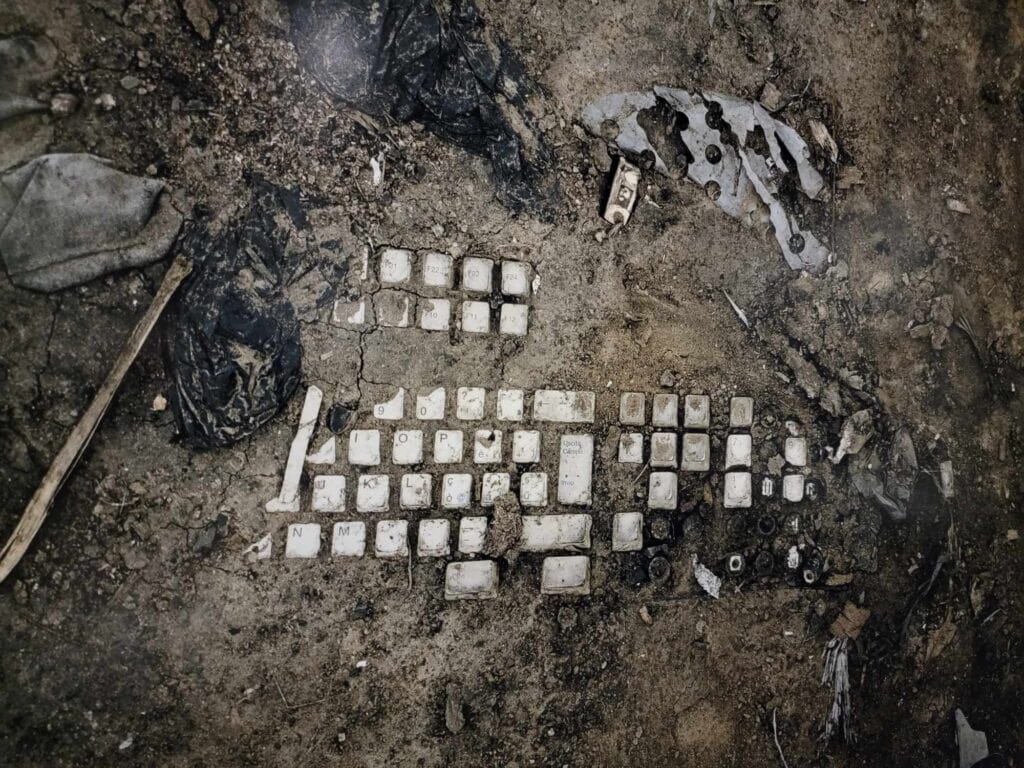
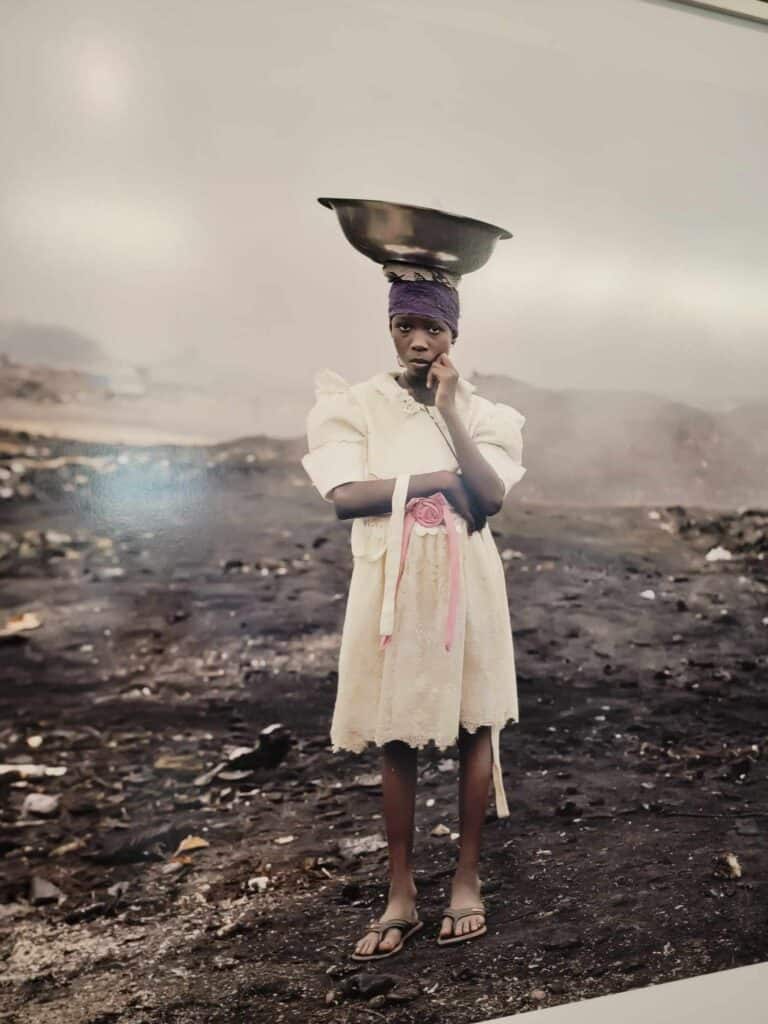
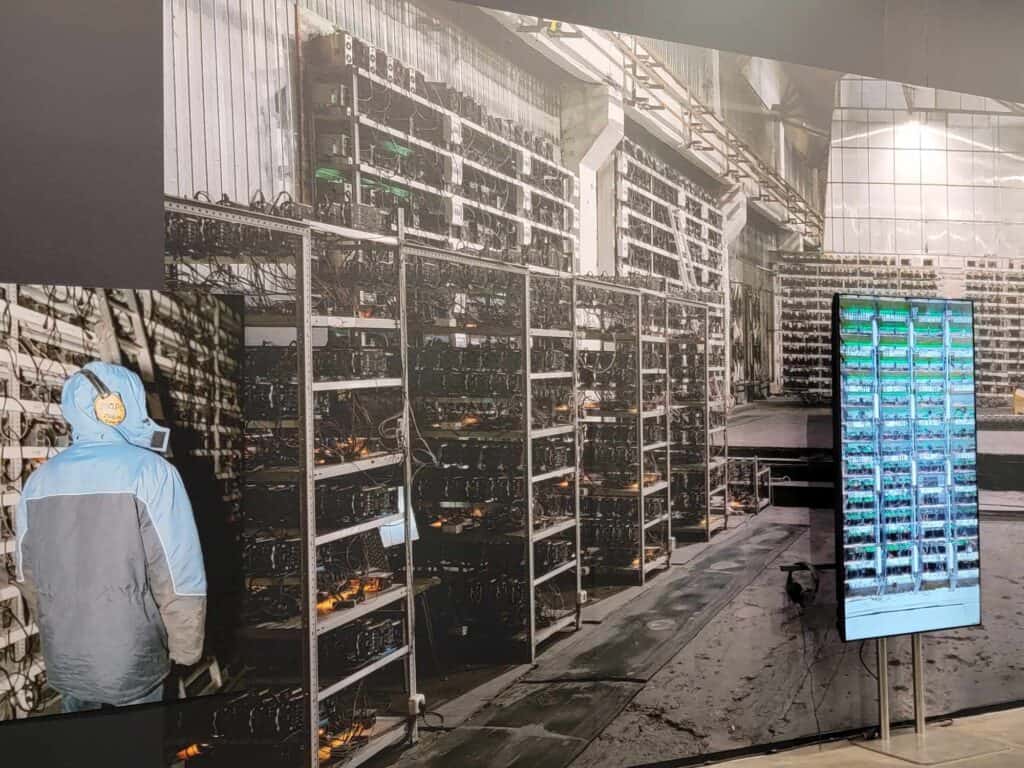
The temporary exhibitions change over time, so check with the website to see the permanent exhibitions and the temporary exhibitions that will be featured during your visit. We were able to catch a really fascinating exhibit on the history of German film, and another exhibit called Mining and Man which examined current mining practices and talked about their environmental impact.
Planning Your Visit to Völklingen Ironworks
🎫 Opening Hours and Ticket Prices
The Volklingen Ironworks is open 362 days a year, with hours depending on the season. Check the official website for hours of operation.
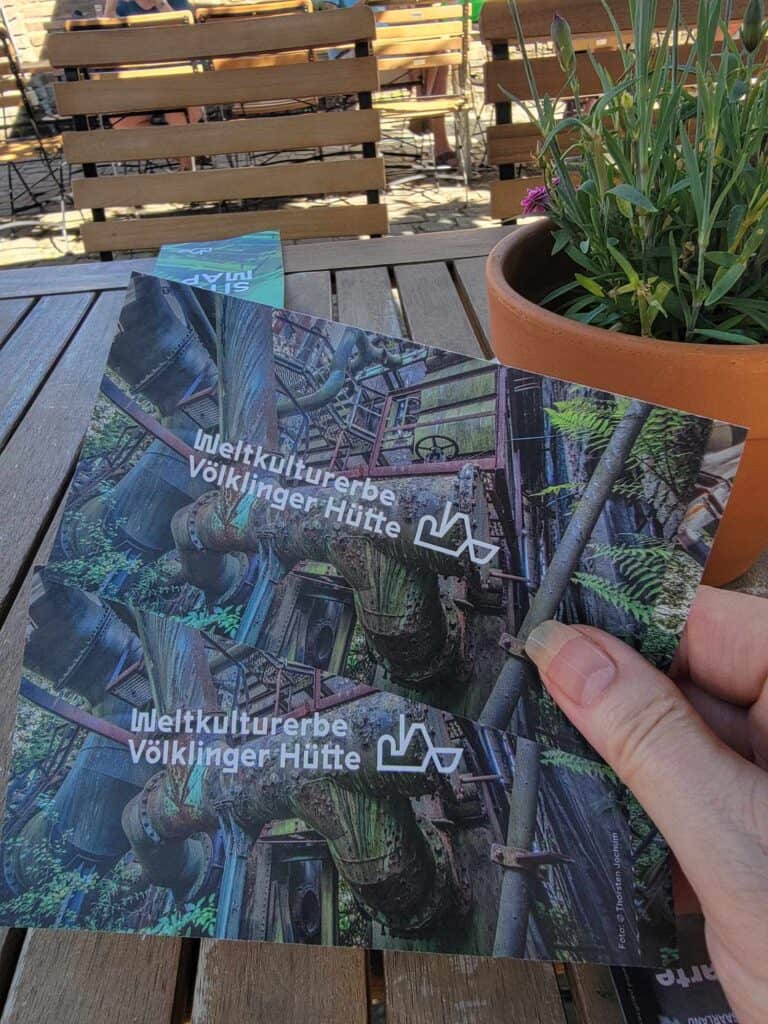
Regular tickets cost 17 Euros each which covers the entire installation – the ironworks, and the special exhibits.
♿️ Accessibility
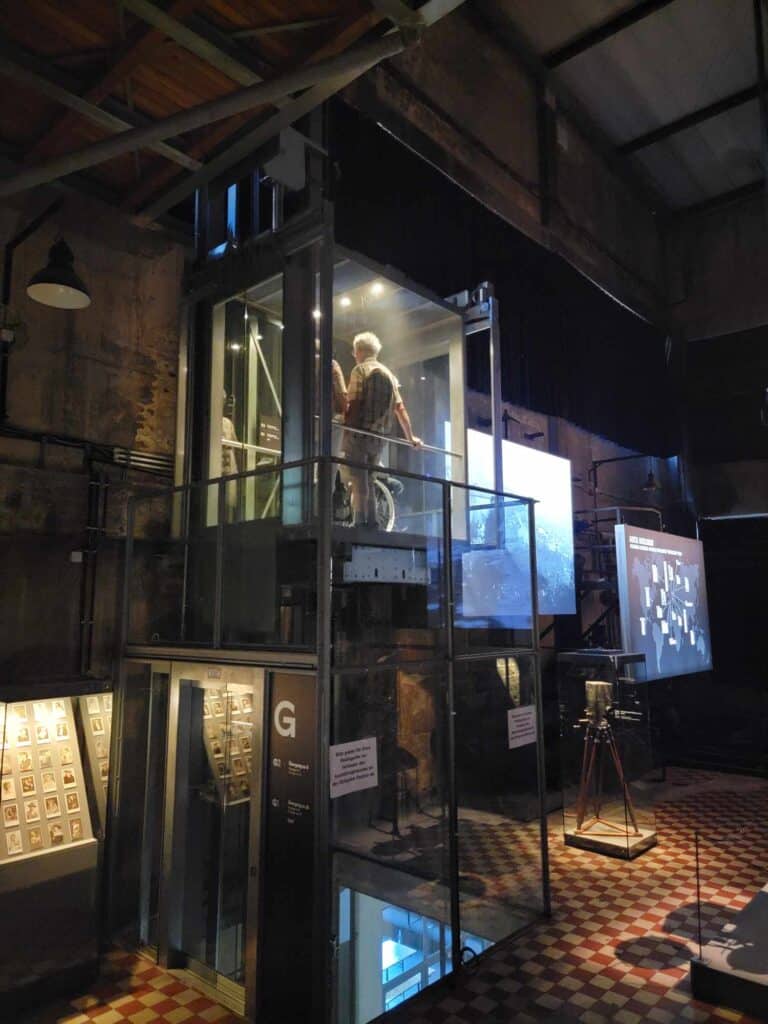
The Volklingen Ironworks makes an effort to be accessible to everyone. Remember that the site itself is an industrial complex so there will be some uneven surfaces and stairs. But there are also elevators and accessible routes and facilities available. If you have a disability or mobility challenges, inquire before your visit or at the visitor center for specific information.
🕒 How Long Will it Take to Visit Volklingen Ironworks?
Given the vastness of the site, it would be easy to spend the day there. We were there for a little over five hours, and spent about half the time in exhibits and the other half the time wandering through the spaces and exploring. But you could pare your visit down to a couple hours and it would still be worth the visit.
- Half-day visit: Focus on the main industrial halls, the blast furnaces, and the central exhibition right when you enter.
- Full-day visit: Explore the entire site, including the coking plant, the machine hall, Paradise, the viewing platform on the roof, and the power plant.
💬 Tours and Signage
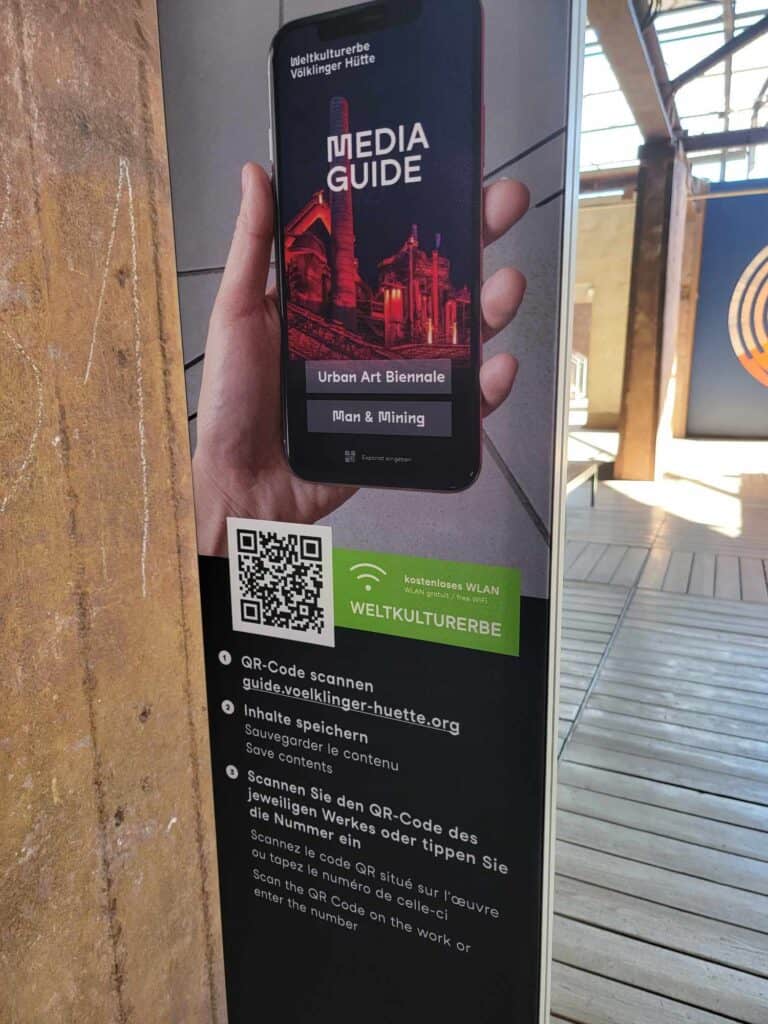
Völklingen Ironworks provides extensive signage in English, making it pretty easy to navigate the site independently.
Both guided and self-guided tours are available. While the majority of guided tours are conducted in German, they also offer guided tours in English, French, Italian, Greek, Russian and sign language! You can request a guided tour here.
Sponsored content: this section contains affiliate links
🐾 Dog-friendliness
Unfortunately (but understandably) dogs are not permitted at the site.
🅿️ Parking
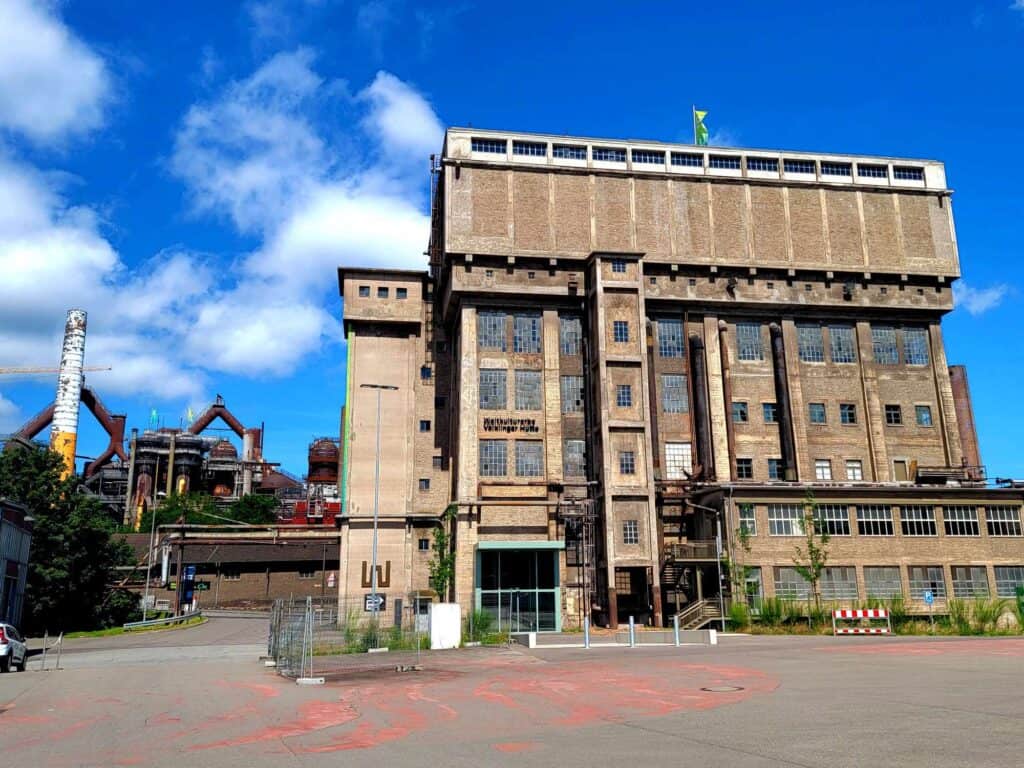
There is a very large parking lot right on site, which is free. After you park, follow the signs to the entrance which is on the other side of the building.
🚾 Restrooms
There are restrooms in several places including downstairs in the exhibit space.
🍺🍰 Food and Drink
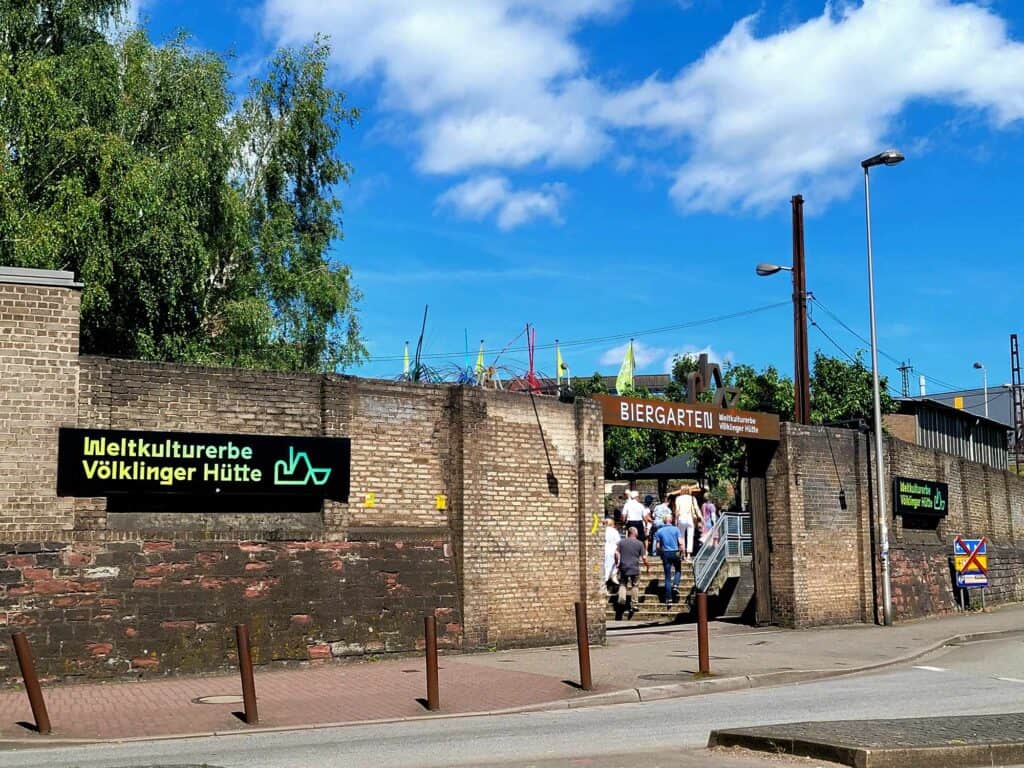
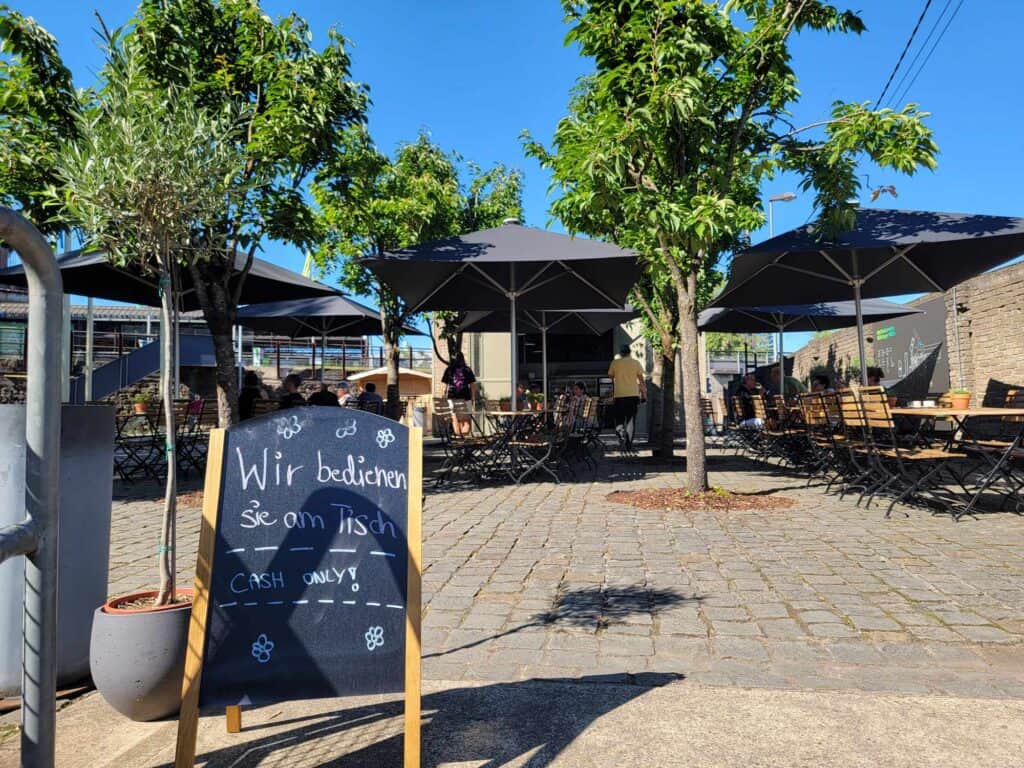
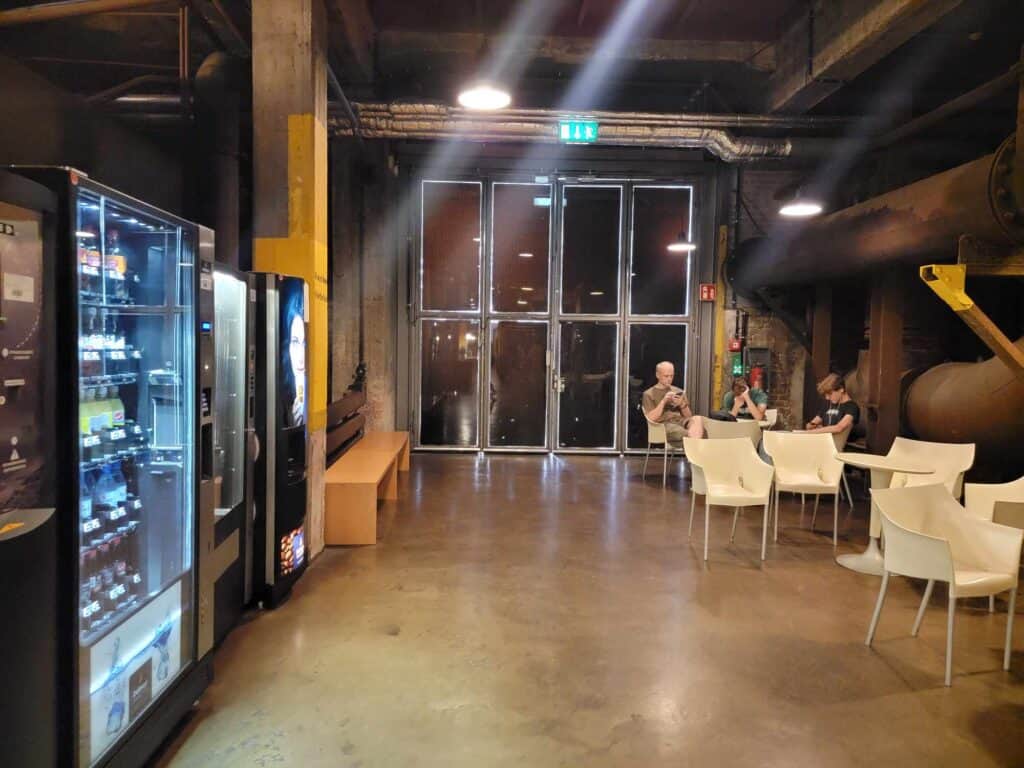
There’s a nice beer garden right across the street that’s open from 11am-7pm. It’s a little pricey, but a nice spot to enjoy a cold drink and a slice of cake.
There are also vending machines near the gift shop with candy and snacks, and cold beverages.
🎁 Gift Shop
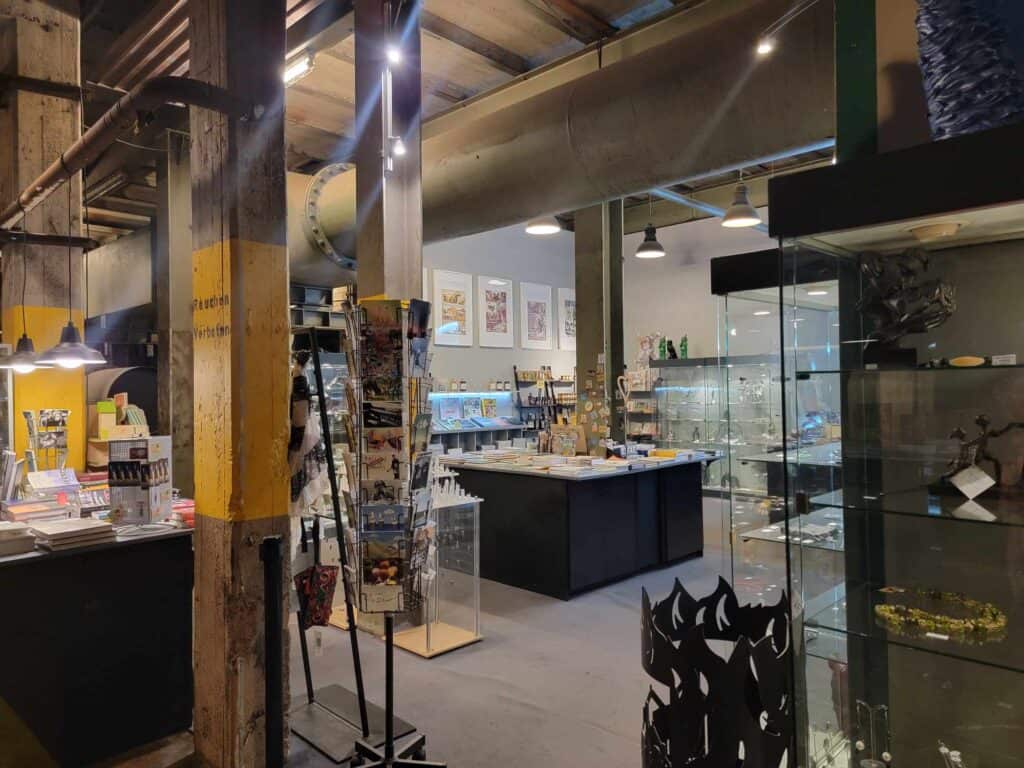
The gift shop is nice, but has a lot of things that don’t seem to directly relate to the ironworks. It’s right by the ticket counter at the entrance.
✅ Educational opportunities
The way that UNESCO had handled the many facets of the Völklingen Ironworks is to be absolutely commended. It provides the perfect opportunity for anyone interested in history to really do a deep dive into the pragmatic and ethical issues surrounding resource extraction, the industrial revolution, labor practices, World War I, Naziism and the Second World War, the war crimes tribunal and how it functioned, how Germany and the world worked its way out of the post-War era into the modern day; and lastly, how we are still left grappling with accountability, making amends, and sometimes whitewashing events that make us uncomfortable.
It also presents an excellent educational opportunity for kids, and allows adults to raise some or all of these issues with them as they explore. There’s plenty of wow-factor that kids will appreciate, especially those who love construction, but deeper levels of education are available as well.
It is not just a chance to appreciate industrial architecture, but also to learn the human stories that shaped this remarkable place. UNESCO has done a masterful job at intertwining the two, and your visit will be one that you never forget. Guaranteed.
Tips for Visiting the Völklingen Ironworks
- 👟 Comfortable closed shoes: The site is extensive, and you’ll be doing a lot of walking, so be sure your feet are happy. There are also lots of stairs so you don’t want open shoes that will catch.
- 📷 Camera: If you have a great SLR camera, think about bringing it. Your phone is amazing, but if you’ve got the equipment and an eye for it, you’ll want to capture the impressive architecture and industrial machinery.
- 💧 Water: Bring water with you, or make sure you have change for the vending machines. In summertime especially, it can get pretty hot.
How to Get to Völklingen Ironworks
🚉 By Train
- From Frankfurt Main Station – 3 hours 24 minutes
- From Saarbrücken – 7 minutes
- From Kaiserslautern – 55 minutes
- From Stuttgart – 3 hours 25 minutes
🚗 By Car
- From Frankfurt – 1 hour 47 minutes
- From Saarbrücken – 13 minutes
- From Kaiserslautern – 51 minutes
- From Stuttgart – 2 hours 32 minutes
✈️ Nearest airports
Frankfurt (FRA), Luxembourg (LUX), Saarbrücken (SCN), Stuttgart (STR), Cologne (CGN).
Related Posts:
- 21 Best Things to Do in Kaiserslautern Germany
- 28 Best Day Trips from Kaiserslautern: Your Ultimate Guide
- Is Trier Worth Visiting? Exploring a Hidden Gem in Germany
- The Perfect Weekend in Cologne
- Saarbrücken Castle – Explore this Fascinating Underground World
- Explore the Astounding Schlossburg Caves and Castle Ruins in Homburg
- Hike to Beautiful Hohenecker Castle in Kaiserslautern, Germany
Find out when we post more great content about Europe’s hidden gems! Subscribe below:
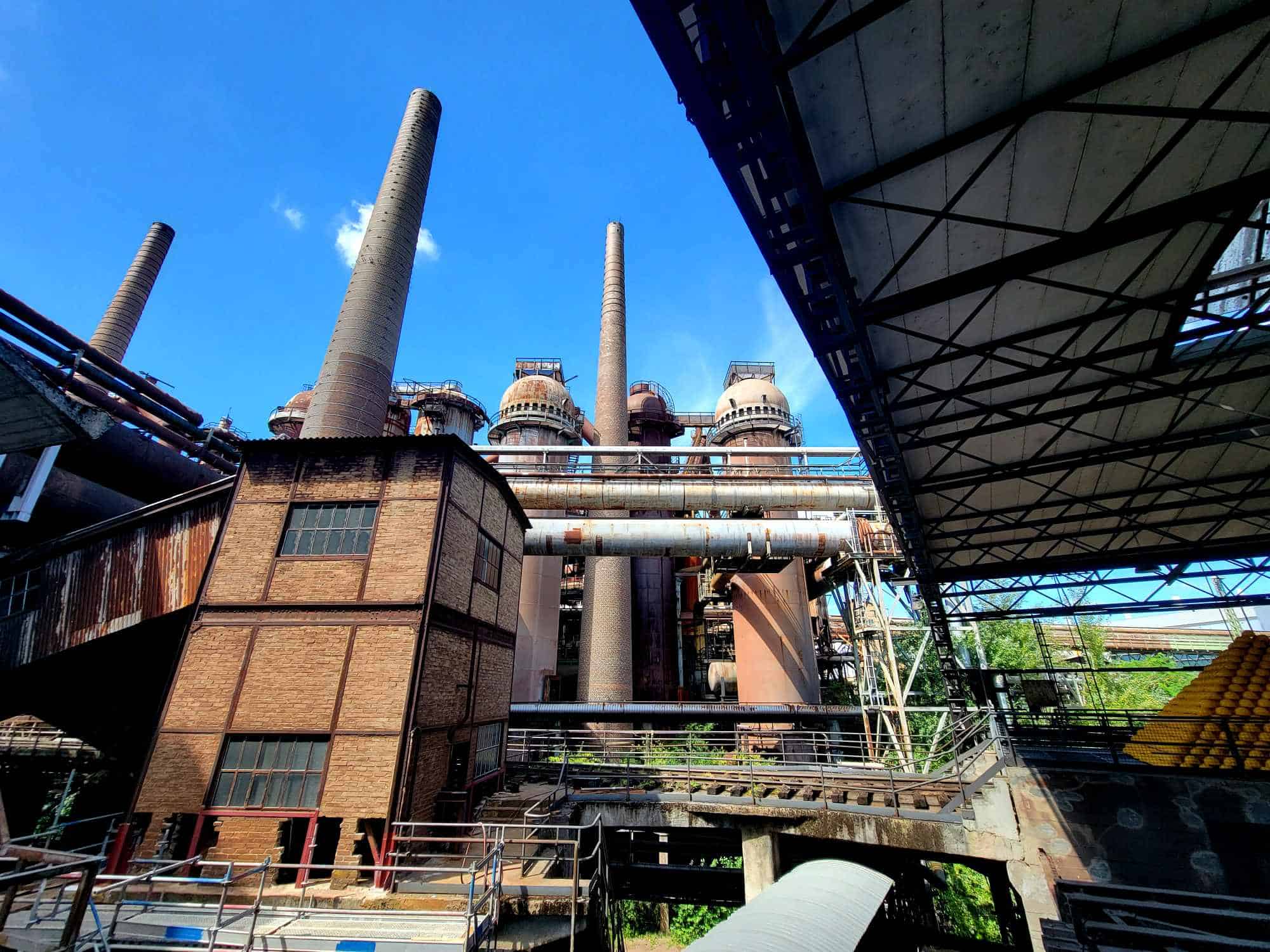
Jeanne, I have been following you since the Sarah Palin days and I must tell you how much I enjoy your Adventure Lion site, along with your other sites, of course. I’ve learned a great deal from you. 😉
Thank you so much, Carole! I’m so glad you’re enjoying it!
Education is my happy place.
Mine too! And there are so many opportunities for it!
Love this! Of course I’m subscribing!
Thanks! 😀